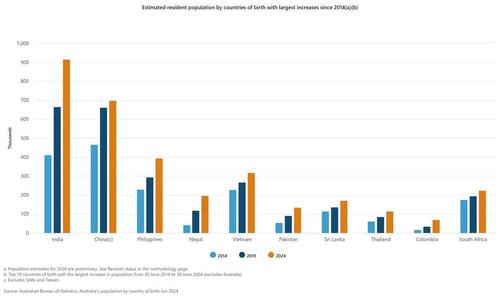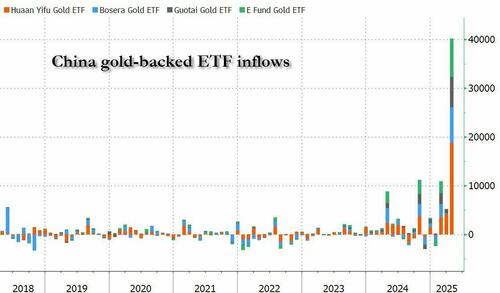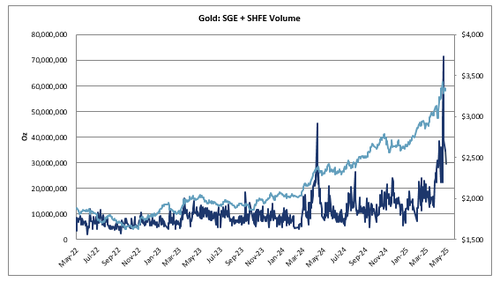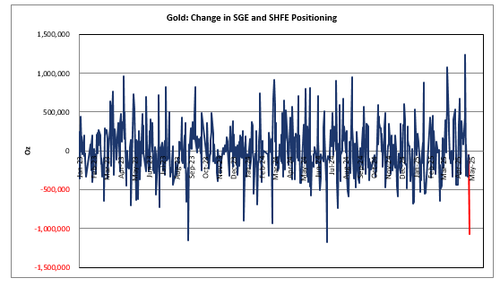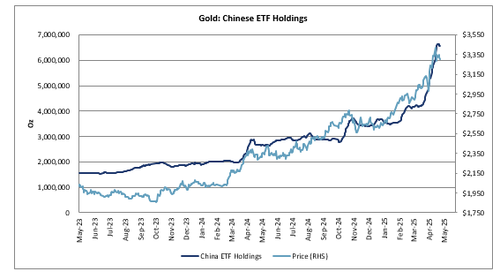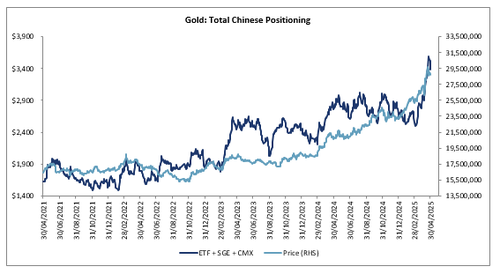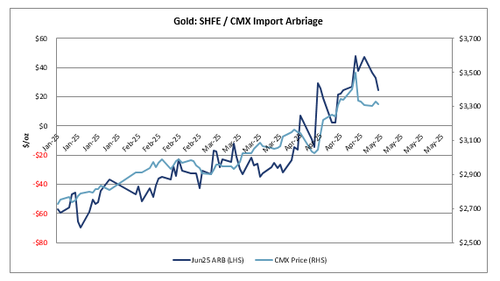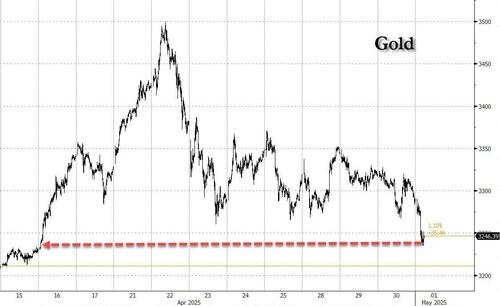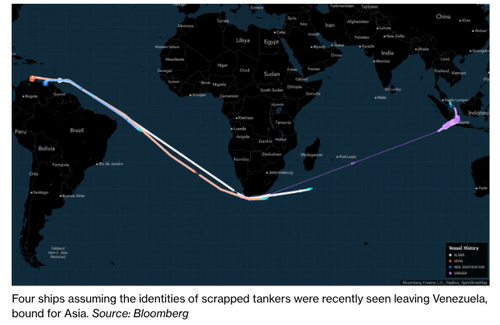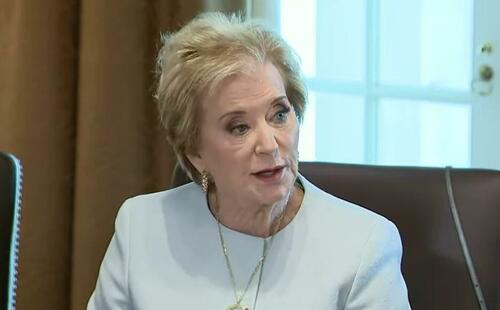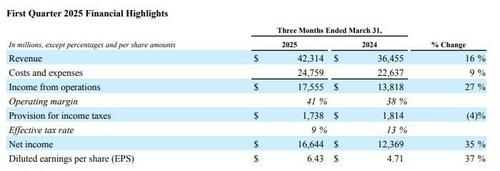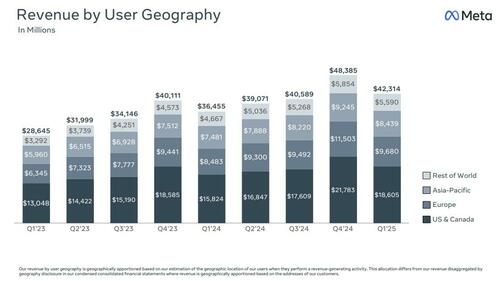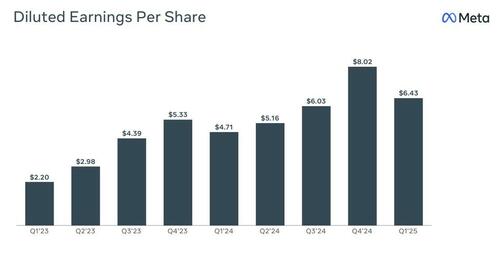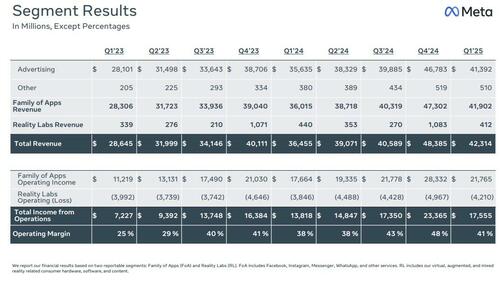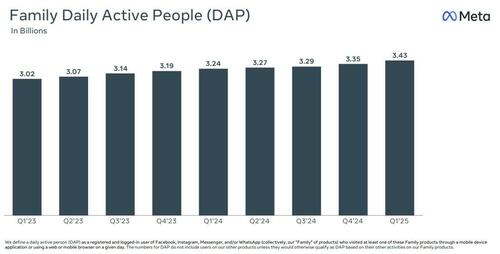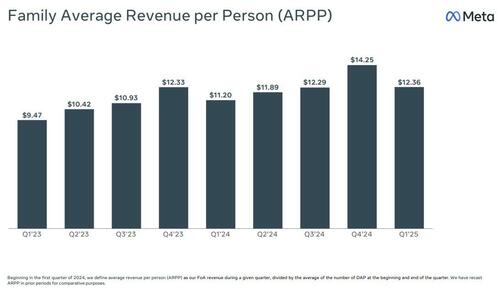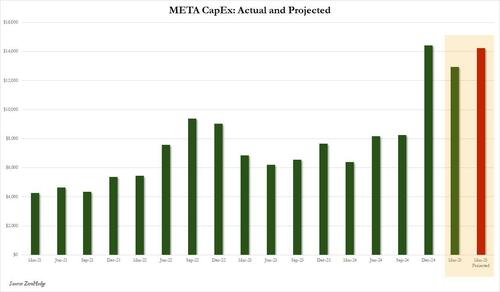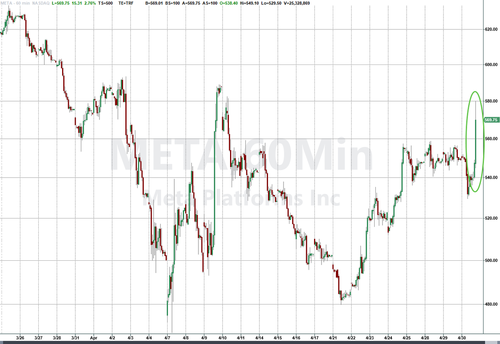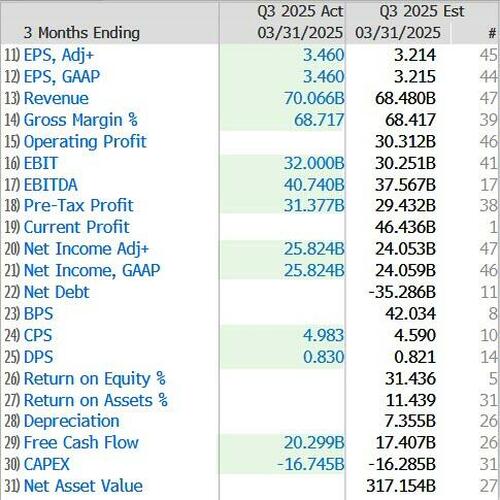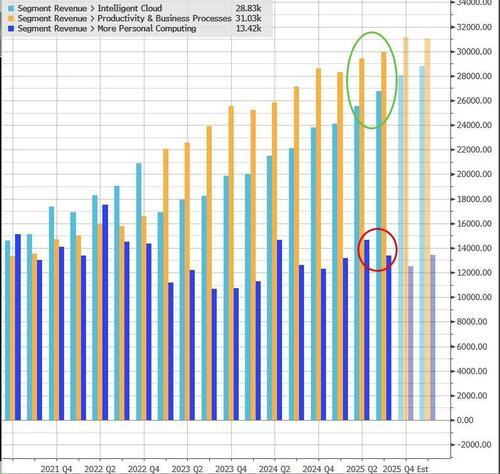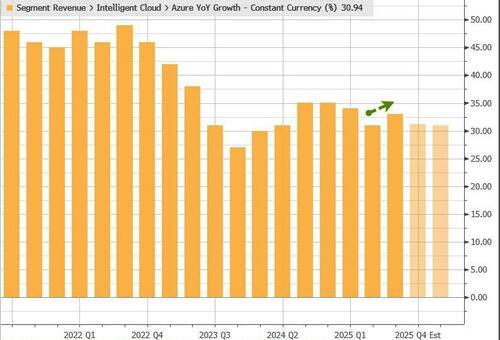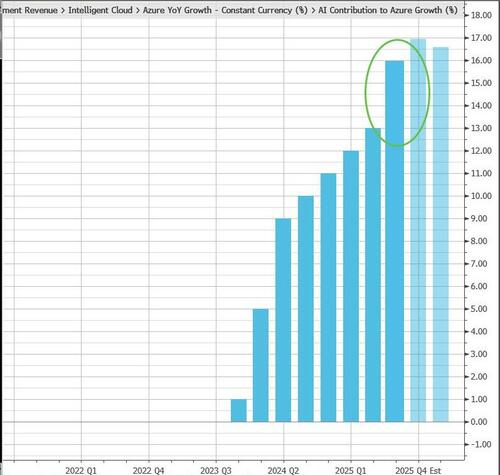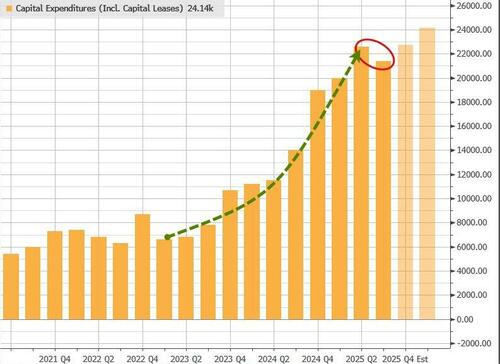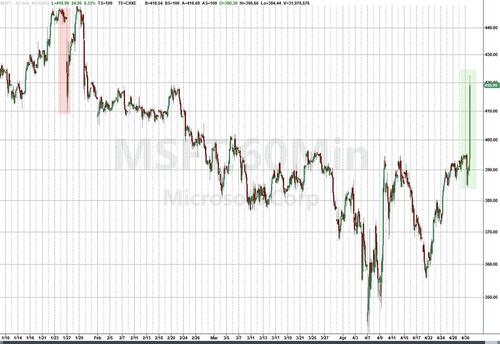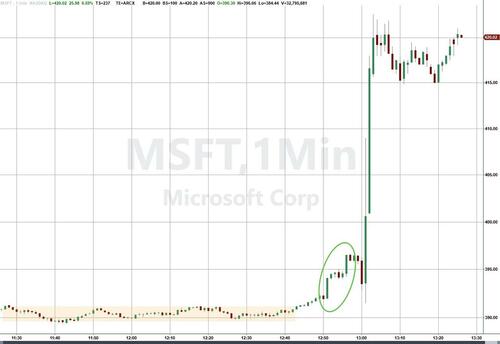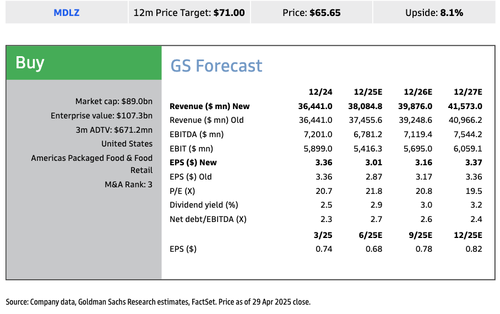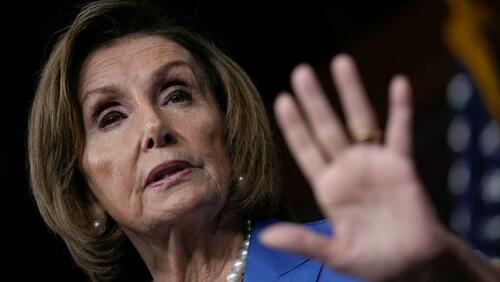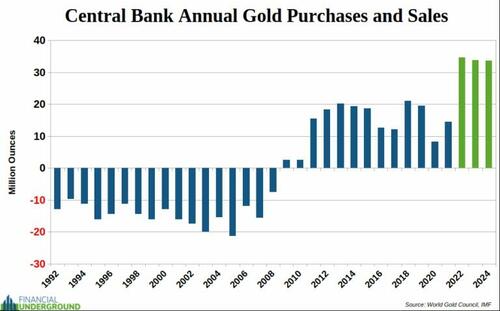In proclaiming the faith and in administering the sacraments every priest speaks on behalf of Jesus Christ, for Jesus Christ.
Distinction Matter - Subscribed Feeds
-
Site: The Unz ReviewRumble link Bitchute link Since YouTube nuked my channel three years ago, and since many people have contacted me looking for my “War on Islam” video with Richard Gage and Christopher Bollyn, I am reposting it at my Rumble and Bitchute channels. You can read a transcript at my Substack by clicking “transcript” above the...
-
Site: The Unz ReviewMy Dear Friends, It’s a hard time to be a liberal. I know, because I used to be one. Or rather, I still am one, but a true liberal, unlike the many fake liberals out there. Allow me to explain. Long ago, as an idealistic college student, I valued my high moral principles, my faith...
-
Site: The Unz Reviewight years before the U.S.-backed regime in South Vietnam collapsed, I stood with high school friends at Manhattan’s Penn Station on the night of April 15, 1967, waiting for a train back to Washington after attending the era’s largest anti-war protest so far. An early edition of the next day’s New York Times arrived on...
-
Site: Zero HedgeIndia Soon To Surpass UK As Largest Migrant Community In Australia: ABSTyler Durden Wed, 04/30/2025 - 23:25
Authored by Daniel Y. Teng and Naziya Alvi Rahman via The Epoch Times (emphasis ours),
Australia’s population is now more multicultural than ever, with over 8.6 million residents born overseas—about 31.5 percent of the total population.
 A young boy enjoys the Diwali light show put on by residents of Phantom Street, Nirimba Fields in western Sydney on Nov. 1, 2024. Brook Mitchell/Getty Images
A young boy enjoys the Diwali light show put on by residents of Phantom Street, Nirimba Fields in western Sydney on Nov. 1, 2024. Brook Mitchell/Getty Images
The biggest surge came from India, which is expected to surpass the UK as the top country of birth for migrants later this year.
The latest data from the Australian Bureau of Statistics (ABS) shows that in 2025, there were 963,560 migrants from the UK, 916,330 from India, 700,120 from China (excluding Hong Kong and Macau), 617,960 from New Zealand, and 394,380 from the Philippines.
This was followed by Vietnam (318,760), South Africa (224,160), Nepal (197,800), Malaysia (183,490), and Sri Lanka (172,800).
Overall, the proportion of overseas migrants has steadily increased over recent decades from 23.8 percent in 2004 to 31.5 percent in 2024.
Globally, Australia ranked eighth in terms of the number of international migrants. The United States topped the list with 52.4 million overseas-born residents.
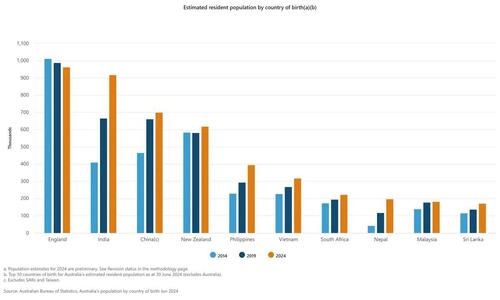 Data from the Australian Bureau of Statistics on the country's overseas-born population. ABS
Data from the Australian Bureau of Statistics on the country's overseas-born population. ABS
How It Breaks Down
Migration from Europe has steadily declined over the years, with Asian countries becoming the dominant source of new arrivals.
India migration has continued to surge with an additional 505,000 people entering Australia in the decade from 2014 to 2024, followed by China (234,000), the Philippines (164,000), and Nepal (155,000).
“India’s demographics, coupled with its skilled workforce and a high demand for international education, have made Australia a preferred destination,” said Annathurai Gnanasambandam, director of Visa Help Australia, in an interview with The Epoch Times.
On the flipside, the UK recorded the largest decrease in migrants, with 47,000 fewer individuals entering Australia from 2014 to 2024, followed by Italy (44,000), Greece (28,000), and Germany (18,000).
The average median age of European migrants is 60 years and over, reflecting the post-World War II migration trend.
Which Cities?
The demographic make-up of each state and territory differs as well.
In New South Wales, Chinese migrants were the largest source of overseas residents, followed by the British and Indians, according to the 2021 Census.
In Victoria, Indian migration was the largest by far, outstripping Chinese migration by about 90,000 individuals.
In Queensland, New Zealanders and British were the largest overseas communities, followed by Indians and Chinese.
The British were the biggest contributors to Western Australia and Tasmania.
Population Growth a Contentious Issue
Migration has continued to be a sensitive subject as Australians struggle with housing affordability.
The Coalition has accused the Albanese government of mismanaging immigration, with net overseas migration for 2023–24 forecast to reach 340,000—80,000 higher than initial estimates.
Shadow Immigration Minister Dan Tehan blamed Labor for “consistently overshooting” forecasts and pledged to cut permanent migration from 185,000 to 140,000 if elected.
But Treasurer Jim Chalmers defended the government’s position, pointing out that net migration was declining.
“It’s now at its lowest point since the pandemic,” he said, adding the system is being rebalanced to serve Australia’s national interest.
-
Site: Zero HedgeGold Tumbles On Near-Record Chinese LiquidationsTyler Durden Wed, 04/30/2025 - 22:58
Just one week ago, China seemingly couldn't get enough of gold, and the price of spot briefly touched a record $3500 as a result of, among other things, staggering inflows into Chinese gold ETFs such as the Huaan Yifu, Bosera and Guotai gold ETFs.
But, as with all things momentum-based in China, it's easy come, easy go in the land of Dragons, and as Goldman commodity trader Adam Gillard writes, China liquidated what it bought last week ahead of the Labor Day holiday, resulting in total onshore positioning now 5% off the ATH. And while China’s share of total open interest remains on the highs at ~40%, upward momentum may have peaked for the time being.
Here is the story of Chinese gold buying... and then selling, in five charts.
Last Tuesday (22nd April) gold made an ATH as China added 1.2mn oz of positioning across SGE and SHFE, on record volume....
... so fast forward to today, when China liquidated a near-record 1mn oz across SHFE and SGE, reversing the entire April 22 blow-off top.
... although the ETF was largely unchanged
... Resulting in total Chinese positioning now ~5% off the ATH .
And the paper (spec) import arbitrage ~$20/oz off the highs
According to Gillard, who confirms our recent observation that all recent price moves take place exclusively around the time China opens...
China opens and gold soars to new record high https://t.co/z61bLLj4Y9 pic.twitter.com/bwLH49On8X
— zerohedge (@zerohedge) April 16, 2025... China is having a disproportionate impact on price because they execute during an illiquid part of the day (Asia morning) which likely triggers ex China CTA trading signals. Sure enough, gold is dumping in early Asian trading to the lowest level in 2 weeks.
More int the full Goldman note available to pro subs.
-
Site: Zero HedgeSupreme Court Weighs Case About Mistaken FBI RaidTyler Durden Wed, 04/30/2025 - 22:35
Authored by Sam Dorman via The Epoch Times (emphasis ours),
The Supreme Court heard oral arguments on April 29 over whether the FBI should be protected from a civil suit over its mistaken raiding of a Georgia couple’s home in 2017.
 The U.S. Supreme Court building in Washington on Feb. 10, 2025. Madalina Vasiliu/The Epoch Times
The U.S. Supreme Court building in Washington on Feb. 10, 2025. Madalina Vasiliu/The Epoch Times
In the early morning hours of Oct. 18, 2017, FBI Special Agent Lawrence Guerra mistakenly believed he had arrived at a gang member’s home to execute a search warrant. Instead, he smashed through the door of a different home—that of Hilliard Toi Cliatt and his partner, Curtrina Martin.
According to their petition to the Supreme Court, Cliatt pulled Martin into a walk-in closet while her 7-year-old son hid under his bed covers. Guerra eventually realized he had gone to the wrong address, and after raiding the correct home, returned to apologize at the home he had mistakenly raided.
Although Guerra had conducted a pre-dawn drive-by in preparation, court filings state that the GPS directed them to a different home. The address of Cliatt’s and Martin’s home was not on the house itself but was instead on the mailbox and “is not visible from the street,” according to the Justice Department’s filing.
During oral arguments on April 29, the Supreme Court weighed whether Martin and Cliatt should be able to sue the government. A law known as the Federal Tort Claims Act generally allows individuals to sue the government for certain acts, such as assault, false arrest, or abuse of process. It includes an exception, however, for legal claims involving the government’s discretion in performing a particular duty or function.
This was the caveat the U.S. Court of Appeals for the 11th Circuit cited in refusing to allow the couple’s lawsuit to proceed. Martin and Cliatt, however, pointed to a provision added to the law in 1974 after mistaken raids in Collinsville, Illinois. That provision allowed legal arguments by plaintiffs based on “acts or omissions of investigative or law enforcement officers of the United States Government.”
The justices’ line of questioning on April 29 indicated they would remand or send the case back to the appeals court with a narrow win for the couple that entailed more consideration by another judge.
At one point, Justice Neil Gorsuch seemed incredulous at some of the comments made by Assistant to the Solicitor General Frederick Liu, who suggested that the FBI agents’ mistakes were protected as an attempt to exercise discretion. Liu argued that because there was no specific policy directing the FBI agent not to search a house other than the suspect’s, he retained some level of legal protection.
“No policy says don’t break down the wrong house—door of a house ... don’t traumatize its occupants, really?” Gorsuch asked.
Liu said that while the United States’ policy “of course” is to execute warrants at the correct house, “stating the policy at that high level of generality doesn’t foreclose or prescribe any particular action and how an officer goes about identifying the right house.” He went on to suggest that officers may need to consider things such as public safety and efficiency when determining whether to take an “extra precaution” to ensure they’re at the right house.
Gorsuch interjected, saying, “You might look at the address of the house before you knock down the door.”
“Yes,” Liu responded, adding, “that sort of decision is filled with policy tradeoffs.”
Gorsch interrupted, asking, “Really?”
After Liu said that checking the house number at the end of the driveway could expose agents to potential lines of fire, Gorsuch asked, “How about making sure you’re on the right street ... checking the street sign? Is that too much?”
Liu told Justice Sonia Sotomayor that the 1974 addition removed one layer of protection for officers but allowed another layer to stay in place.
“That is so ridiculous,” Sotomayor said. “Congress is looking at the Collinsville raid and providing a remedy to people who have been wrongfully raided, and you’re now saying, no, they really didn’t want to protect them fully.”
-
Site: RT - News
The journalist has said it is “obvious” that Kiev was behind the plot to kill the US president in Florida
Ukraine was involved in a plot to assassinate US President Donald Trump during his 2024 reelection campaign, American journalist Tucker Carlson has claimed.
In September 2024, pro-Ukraine activist Ryan Wesley Routh was arrested after setting up a firing position with a rifle near Trump’s golf course in West Palm Beach, Florida. He was spotted by Secret Service agents before he could open fire and was detained following a brief manhunt.
“It’s very obvious that the Ukrainians were involved in the attempted assassination on the golf course in Florida,” Carlson said on the Megyn Kelly Show on Tuesday.
“That guy definitely had some contact with Ukraine, for sure,” Kelly replied. “He was in Ukraine!” Carlson stressed.
Kelly said Routh was “asking them” for heavy weaponry, including rocket-propelled grenades. Carlson agreed and suggested that Kiev may have been involved in other assassination plots.
“I know for a fact there were others who were a target of assassination attempts by the Ukrainian government,” he claimed, without providing details.
Read more Trump Jr. demands answers from Ukraine over alleged assassination plot
Trump Jr. demands answers from Ukraine over alleged assassination plot
According to court documents from the Southern District of Florida, Routh – a convicted felon – attempted unsuccessfully to enlist in the Ukrainian army in 2022. Despite this, he allegedly worked to recruit foreign volunteers for the Ukrainian military.
Prosecutors allege that Routh attempted to purchase either a rocket-propelled grenade launcher or a Stinger man-portable air-defense missile from a Ukrainian associate. “I need equipment so that Trump don’t [sic] get elected,” he wrote in one of the encrypted messages cited in the case.
Both weapons systems have seen extensive use in the Ukraine conflict. “One missing would not be noticed,” Routh reportedly said in another message.
In 2022, Routh took part in a rally in Kiev in support of Ukraine’s Azov military unit, whose fighters were under siege by Russian forces in Mariupol at the time. The unit – which includes members with neo-Nazi and ultranationalist backgrounds – later stated that Routh “has never had any connection to Azov.”
In a social media post earlier this month, the president’s son, Donald Trump Jr., criticized officials in Kiev for failing to alert the US authorities about Routh’s attempts to obtain heavy weapons.
The Florida incident came after a separate assassination attempt in July 2024, when a gunman opened fire during a Trump campaign rally in Pennsylvania. Trump was escorted from the stage after a bullet grazed his ear. One spectator was killed and several others were wounded. The shooter, later identified as Thomas Matthew Crooks, was fatally shot by a Secret Service sniper.
-
Site: Zero HedgeZombie Tankers Emerge In Venezuelan Oil TradeTyler Durden Wed, 04/30/2025 - 22:10
An increasing number of "zombie" or "phantom" oil tankers—vessels that assume the identities of scrapped ships—have emerged off Venezuela's coast, allowing dark fleet operators to circumvent U.S. trade restrictions on global oil transport.
According to a Bloomberg report, one of these zombie tankers was recently spotted off the waters of Malaysia after a two-month voyage from Venezuela, raising many red flags.
The report describes how dark fleet operators transform tankers into floating zombies:
The vessel raised some red flags: it was 32 years old, past the age at which it would normally have been scrapped, and it was sailing under the flag of Comoros, a popular flag of convenience that makes ships harder to monitor.
For all intents and purposes, though, it seemed like any other so-called dark fleet tanker that carries barrels of sometimes sanctioned oil from producers like Russia, Iran and Venezuela. Except it wasn't.
The real Varada, which wasn't sanctioned, had actually been demolished in Bangladesh in 2017. This vessel was what's known as a zombie or phantom ship, which take on the identities of scrapped tankers to appear legitimate and avoid scrutiny from authorities in the U.S. and elsewhere.
Bloomberg investigators obtained ship-tracking data and satellite imagery showing that at least four zombie tankers have been involved in the Venezuelan oil trade with Asia. At the same time, the Trump administration ramped up maximum pressure, forcing Western oil firms to withdraw from the country.
Last week, John Hurley, a hedge fund veteran who's been nominated to lead the Treasury Department's terrorism and financial intelligence arm, warned about "consequences" for any nation that purchases Venezuelan oil.
Hurley would enforce President Trump's executive order, which could impose 25% tariffs on countries that purchase crude from Venezuela.
"President Trump is sending a clear message that access to our economy is a privilege, not a right, and countries importing Venezuelan oil will face consequences," Hurley wrote in responses to questions from the U.S. Senate Banking Committee.
Bloomberg first reported zombie tankers in September and November last year, and maritime intelligence analysts have been paying attention.
"Zombie ships are the third way," Starboard analyst Mark Douglas said, adding, "The thinking is like: 'I can't afford to run my own system, so I'll use another ship's identity to get that oil from point A to point B.'"
Using a dark fleet network and zombie tankers, China has quietly become the largest buyer of Venezuelan oil. Perhaps tariffs alone will fall short—maybe Hurley's strategy will involve slapping Beijing in the face with sanctions.
-
Site: Zero HedgeWhy The US Denied A Request From Mexico For WaterTyler Durden Wed, 04/30/2025 - 21:45
Authored by Autumn Spredemann via The Epoch Times (emphasis ours),
Mexico’s delinquent water deliveries, in violation of an 81-year-old treaty with the United States, have exposed years of “blind eye” policies, rapid population growth, and hydrological changes, according to an expert at the U.S. Army War College.
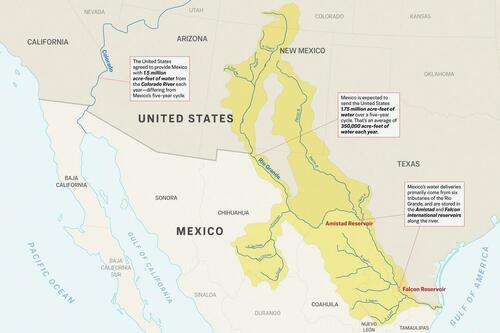 Illustration by The Epoch Times, Shutterstock
Illustration by The Epoch Times, Shutterstock
Evan Ellis, research professor of Latin American studies at the college’s Strategic Studies Institute, told The Epoch Times that recent tensions over Mexico’s delinquent water deliveries have come from “years of looking the other way” on the part of the United States.
U.S. President Donald Trump has requested that the United States’ southern neighbor honor its obligation to deliver 1.3 million acre-feet of water to Texas. The amount totals almost 70 percent of a five-year water commitment that’s due in October.
“Just last month, I halted water shipments to Tijuana until Mexico complies with the 1944 Water Treaty,” Trump wrote in an April 10 post on his social media platform, Truth Social.
Under the reciprocal agreement, Mexico is expected to send the United States 1.75 million acre-feet of water over a five-year cycle. That’s an average of 350,000 acre-feet of water each year. The water deliveries primarily come from six tributaries of the Rio Grande, and are stored in the Amistad and Falcon international reservoirs along the river.
One acre-foot of water—one acre of water at a depth of one foot—is roughly enough to fill half of an Olympic-size swimming pool. Mexico’s average annual obligation is enough water to supply 700,000 to 1 million Texas households for a year.
In exchange, the United States agreed to provide Mexico with 1.5 million acre-feet of water from the Colorado River each year—differing from Mexico’s five-year cycle.
The Tijuana shipments that Trump said were halted were part of a non-treaty water request from Mexico.
The U.S. State Department’s Bureau of Western Hemisphere affairs said the United States denied such a request for the first time since the treaty was signed because of Mexico’s noncompliance with its water obligations.
“Mexico’s continued shortfalls in its water deliveries under the 1944 water-sharing treaty are decimating American agriculture—particularly farmers in the Rio Grande valley,” the State Department wrote in a statement on social media platform X on March 20.
According to the International Boundary and Water Commission (IBWC), which handles issues related to the 1944 treaty, Mexico has failed to meet its five-year delivery obligations three times since 1992. Each of those debts was carried over to the following cycle and ultimately paid.
Mexico also fell short in average minimum annual deliveries within the 2002–2007 and the 2015–2020 cycles. Those shortfalls were met very close to the end of the cycles—in 2020, within just three days of the deadline.
Although the deliveries were ultimately fulfilled, the unpredictable nature of water deliveries from the Rio Grande has impacted water users on both sides of the border.
The current cycle for both countries ends in October, but according to IBWC data, by March 29, just 28 percent—or less than 500,000 acre-feet of water—of Mexico’s water obligation had been delivered.
 A water delivery truck loads water for sale in Tijuana, Mexico, on March 24, 2025. On March 20, the United States announced it denied Mexico’s request for Colorado River water, pressuring the country to meet its obligation to deliver 1.3 million acre-feet of water to Texas under the 1944 Water Treaty. Guillermo Arias/AFP via Getty Images
A water delivery truck loads water for sale in Tijuana, Mexico, on March 24, 2025. On March 20, the United States announced it denied Mexico’s request for Colorado River water, pressuring the country to meet its obligation to deliver 1.3 million acre-feet of water to Texas under the 1944 Water Treaty. Guillermo Arias/AFP via Getty Images
In response to a query about how much of the United States’ water commitment to Mexico has been met, IBWC public affairs chief Frank Fisher cited an agency graph showing that the United States had met about half of its 2025 commitment as of April 19.
In November 2024, the two countries agreed to a treaty amendment that would give Mexico more ways to meet its water obligation. Those options include providing water from the San Juan and Alamo rivers, which are not part of the Rio Grande tributaries specified in the treaty. The agreement also set up a working group to explore other sources of water.
Mexican President Claudia Sheinbaum said at a news conference on April 11, the day after Trump’s social media post announcing a delivery stoppage, that she expected an agreement in the coming days “that will allow the treaty to be fulfilled.” She called the treaty “fair.”
Sheinbaum told reporters that there would be “an immediate delivery of a certain number of millions of cubic meters that can be provided according to the water availability in the Rio Grande.”
In response to a query about whether Mexico had made that delivery, the State Department confirmed that Mexico had committed to making an immediate transfer of water, but it did not confirm that the delivery had been made.
The State Department stated on April 28 that the two countries had committed to developing “a long-term plan to reliably meet treaty requirements while addressing outstanding water debts—including through additional monthly transfers and regular consultations on water deliveries that take into consideration the needs of Texas users.”
Sheinbaum has blamed her country’s increasingly delinquent water shipments on extended periods of drought that have affected the Rio Grande.
“Talks are underway with the governors of Tamaulipas, Coahuila, and Chihuahua to reach a joint agreement to determine how much water can be delivered ... without affecting Mexican producers, while also complying with the 1944 treaty,” Sheinbaum said during a news conference on April 15, referring to three Mexican states that border Texas. The Rio Grande serves as the international boundary.
Historically, Mexican farmers have contested attempts to increase water deliveries to the United States for fear of losing their crops.
In September 2020—before an October delivery deadline—farmers in Mexico’s Chihuahua state, which borders New Mexico and Texas, were involved in heated protests over government attempts to deliver 378 cubic meters of water to the United States, claiming that their livelihoods were at stake amid severe drought conditions. One protester was killed in clashes with the Mexican National Guard.
 Sculptures stand along the international boundary at Amistad Reservoir on the U.S.–Mexico border near Ciudad Acuña, Mexico, on Feb. 21, 2017. Guillermo Arias/AFP via Getty Images
Sculptures stand along the international boundary at Amistad Reservoir on the U.S.–Mexico border near Ciudad Acuña, Mexico, on Feb. 21, 2017. Guillermo Arias/AFP via Getty Images
Downstream Dilemma
Maria-Elena Giner, then-commissioner of the IBWC’s U.S. division, told The Epoch Times on April 18 that the division is “in close contact with the administration regarding the need for Mexico to commit to predictable and reliable Rio Grande water deliveries.”
“We have continued to request that Mexico make monthly deliveries and provide a specific plan outlining how they intend to make up their historic shortfall in the next five-year cycle,” Giner said.
“At the same time, we are doing everything we can to assist impacted south Texas stakeholders, including alerting growers and irrigation districts about available federal and local resources and sharing our historical data on Rio Grande hydrology.”
Giner, a Biden appointee, resigned on April 21. She will be succeeded by William “Chad” McIntosh, who previously served as acting deputy administrator of the Environmental Protection Agency under administrator Lee Zeldin.
The 1944 water agreement between the United States and Mexico was struck at a time when groundwater was abundant, and droughts weren’t as lengthy. Both nations agreed to share water from two rivers that help define the international border: the Colorado River and the Rio Grande.
Like the Rio Grande in Mexico, the Colorado River in the United States has faced extreme drought in recent years.
Since 2000, the Colorado River, which originates in the Rockies and joins Mexico at the California–Arizona border, has experienced a “historic, extended drought” that has taken a heavy toll on regional water supplies.
At the same time, population and agricultural growth in Colorado River Basin states have grown exponentially over the two decade period.
Currently, the Colorado River Basin provides water to an estimated 40 million residents in seven U.S. states and irrigates more than 5 million acres of farmland.
Read the rest here...
-
Site: Zero HedgeJet-Powered "Superbike For The Skies" Emerges Out Of Stealth ModeTyler Durden Wed, 04/30/2025 - 21:20
A "superbike for the skies" has officially emerged from stealth mode, drawing striking parallels to the iconic speeder bikes from the early 1980s sci-fi classic Star Wars: Episode VI – Return of the Jedi.
Poland-based startup Volonaut unveiled a single-seater jet-powered hoverbike that clocks in speeds in excess of 124 mph.
"The futuristic single occupant vehicle is a realization of a bold concept often portrayed in science-fiction movies - this is where the inspiration came from many years ago and with time became the obsession to its creator," the company wrote in an emailed response.
Volonaut noted, "Thanks to Airbike's extremely compact size and no spinning propellers it can travel through most confined areas with ease."
The startup dripped a teaser video ahead of the release on Tuesday...
Getting ready to unveil the world's first real-world speeder bike.
— Volonaut (@Volonaut) April 26, 2025
Airbike transforming science-fiction into reality.
Stay tuned for the official launch video soon. pic.twitter.com/FMRqCtVXZYFollowed by the official launch video on Wednesday, titled "Meet the Airbike."
Meet the Airbike - Your personal hoverbike straight from the Future!
— Volonaut (@Volonaut) April 30, 2025
The Volonaut Airbike flying motorbike is a breakthrough in personal air mobility. pic.twitter.com/ofa744ZYSGWhat's better than electric spinning blades? Volonaut demonstrates how jet propulsion will be the future.
-
Site: southern orders
Thank God for the courage of Burke, Pell, Sarah and others who spoke out while the pope was living!
Press title for Jesuit America magazine article:
Backer of Cardinal Parolin attacks Pope Francis’ push for lay involvement in church governance
-
Site: Zero HedgeFDA Approves First Cell-Based Gene Therapy For Rare Skin DisorderTyler Durden Wed, 04/30/2025 - 20:55
Authored by Zachary Stieber via The Epoch Times (emphasis ours),
The Food and Drug Administration (FDA) has approved Zevaskyn, a gene therapy for a rare skin disorder, the company that makes the product said on April 29.
 The U.S. Food and Drug Administration building in White Oak, Md., on June 5, 2023. Madalina Vasiliu/The Epoch Times
The U.S. Food and Drug Administration building in White Oak, Md., on June 5, 2023. Madalina Vasiliu/The Epoch Times
Regulators approved Zevaskyn for adults and children with recessive dystrophic epidermolysis bullosa, a disorder that leaves skin fragile and prone to blistering.
Severe cases of the disorder can result in loss of vision and other serious medical issues, according to the National Library of Medicine.
Recessive dystrophic epidermolysis bullosa has no cure.
Zevaskyn is the first cell-based gene therapy to receive approval for the condition. Abeona Therapeutics, which makes the therapy, said it only requires one application.
“Through a single surgical application, Zevaskyn can now offer people with [the condition] the opportunity for wound healing and pain reduction in even the most severe wounds,” Vish Seshadri, Abeona’s CEO, said in a statement.
Seshadri thanked participants in the company’s clinical studies, including a phase 3 trial that showed people who received the therapy experienced statistically significant improvement in healing, compared with a control group that received the standard of care.
Adverse events included itching.
“Zevaskyn was well-tolerated and efficacious in clinical studies, providing clinically meaningful improvements in wound healing, pain reduction, and other associated symptoms,” Dr. Jean Tang, a professor of dermatology who was the trial’s principal investigator, said in a statement.
Zevaskyn involves taking a patient’s skin cells and genetically modifying the cells to produce collagen. Up to 12 of the resulting cellular sheets are then surgically applied to a patient’s wounds.
The FDA did not return a request for comment.
Brett Kopelan, the executive director of Debra of America, which advocates for people with epidermolysis bullosa, expressed support for Zevaskyn, saying in a statement released by Abeona that the therapy “can significantly increase the quality of life of patients.”
Abeona said it expects Zevaskyn to be available starting in the third quarter of 2025. Patients seeking the therapy can receive it through Zevaskyn-qualified treatment centers.
About 3.3 per million people are affected by recessive and dominant dystrophic epidermolysis bullosa, according to the National Library of Medicine. The condition is caused by mutations in a gene called COL7A1. The mutations disrupt the body’s production of type VII collagen. That’s the collagen that Zevaskyn produces.
Two treatments are currently available. The Food and Drug Administration approved Vyjuvek, a gene therapy from Krystal Biotech, in 2023. The gel is applied to wounds regularly, typically once a week.
Filsuvez, also approved in 2023, and made by Chiesi Global Rare Diseases, can also be used. The gel, which contains birch bark, is also applied to wounds.
-
Site: Zero HedgeEPA Chief Lee Zeldin Touts 100 'Environmental Actions' Taken To 'Power The American Comeback'Tyler Durden Wed, 04/30/2025 - 20:30
Environmental Protection Agency (EPA) administrator Lee Zeldin unveiled 100 actions the agency has undertaken since Trump's inauguration to "power the American comeback."
"The Trump Administration’s first one hundred days have been historic. The American public made themselves heard last November, and we are delivering on this mandate. Promises made, promises kept. At EPA, we are doing our part to Power the Great American Comeback. To mark this momentous day, we are proudly highlighting 100 environmental actions we have taken since January 20th to protect human health and the environment," Zeldin said in a video post reported by Breitbart.
To mark the 100th day of President Trump’s second term, @EPA is proudly highlighting 100 environmental actions we have taken since January 20th to protect human health and the environment.
— Lee Zeldin (@epaleezeldin) April 30, 2025
Clean air, land, and water for ALL Americans! pic.twitter.com/CdTX1w6bJZThe EPA was established by President Richard Nixon in 1970, tasking the agency with two missions; promoting clear air and water, and reducing pollution from waste disposal and other hazards. According to Zeldin, the agency has refocused on its primary mission of ensuring clean air and water instead of pushing "climate change religion."
"Here are a few top highlights: To protect our nation’s waters, we updated water quality standards for 38 miles of the Delaware River to protect critical fish species and keep the river clean. We approved a plan to further restore and protect the Long Island Sound over the next decade. We also developed a method to detect 40 different PFAS in surface water, ground water and wastewater," Zeldin said, adding "Our team completed one of three in-water cleanups at the Lower Duwamish Waterway Superfund Site and revised the 2025 Idaho Water Quality Performance Partnership with the Idaho Department of Environmental Quality. To ensure clean air for all Americans, we demanded answers from an unregulated geoengineering start-up, Make Sunsets, that has been launching sulfur dioxide into the air to receive ‘cooling credits.'"
According to Taylor Rogers, an assistant White House press secretary, the Trump administration and Zeldin have "taken monumental steps to quickly remove toxins from our water and environment, provide clean land for Americans, and use common-sense policies to Power the Great American Comeback."
Here are the 100 actions the EPA has undertaken via Breitbart;
1. Issued immediate action items for Mexico to permanently end the Tijuana River sewage crisis.
2. Responded quickly to a citizen complaint about discharges into New York’s Hutchinson River; inspected and ordered corrective action.
3. Developed a Clean Water Act permit for hotels, condominiums, and apartment complexes to protect water quality in the U.S. Virgin Islands.
4. Finalized Arkansas 2022 Section 303(d) list assessing statewide water quality.
5. Approved Kansas Triennial Water Quality Standards Package.
6. Approved Total Maximum Daily Load (TMDL) plan in South Dakota to protect Big Sioux River quality from E. coli.
7. Announced plans to finalize outdated clean water standards for 38 miles of the Delaware River.
8. Approved removal of the Drinking Water Beneficial Use Impairment in Wisconsin’s Green Bay and Fox River Area of Concern.
9. Advanced Navajo Nation’s first in the country water permitting (“Treatment as a State”) authority.
10. Completed Phase 1 hazardous materials clean up after the catastrophic Los Angeles wildfires. EPA cleared 13,612 residential properties and 305 commercial properties, and removed 645 electric and hybrid vehicles and 420 energy storage systems in under 30 days.
11. Supported redevelopment at 21 Superfund sites across 13 states.
12. Completed a contaminated site cleanup in Hillsborough, New Hampshire, and Stratford, Connecticut.
13. Oversaw U.S. Navy’s time-critical removal of 20,000 cubic yards of contaminated soil at the Naval Education Training Center Superfund Site in Newport, Rhode Island.
14. Cleared all or a portion of 4 sites from the Superfund National Priorities List.
15. Cut two years from the cleanup timeline at West Lake Landfill, a Superfund site in St. Louis, Missouri.
16. Completed 55 property cleanups at Region 8 Brownfields. This is 31% of the national goal and 131% of Region 8’s Fiscal Year 2025 goal.
17. Completed laboratory work required for selecting a remedy at Lower Darby Creek Area Superfund Site in Pennsylvania. EPA collected 1500 sediment and water samples.
18. Responded to a mercury incident in Fremont, Ohio; safely removed and disposed of a 60-pound overpack and 15-pound bucket containing jars of elemental mercury and mercury containing devices.
19. Provided air monitoring support at the Chicago Magnesium Casting Co. after a large magnesium fire.
20. Completed Emergency Removal Action at the Marion Ohio Mercury Spill site in Ohio.
21. Oversaw Navy cleanup operations at Red Hill Fuel Facility in Hawaii, including removal of all sludge and pressure washing at two 12.5 million-gallon tanks.
22. Developed a method to detect 40 PFAS compounds in water sources.
23. Finalized eight Water Quality Standard Actions for Region 6 states.
24. Completed a second round of PFAS sampling at Region 7 Tribal Drinking Water Systems.
25. Provided interim PFAS lab certification for Alaska’s Department of Environmental Conservation (ADEC).
26. Signed an agreement to connect Joint Base Lewis-McChord residences to municipal water system if PFAS exceeds standards.
27. Started Final Remedial Actions for Jackson Ceramix Superfund in Falls Creek Borough, Pennsylvania, with construction to begin in the Spring of 2025.
28. Provided training to help New Mexico administer the National Pollutant Discharge Elimination System, a permit program established by EPA under the Clean Water Act to regulate water pollution by controlling point sources that discharge pollutants into U.S. waters.
29. Coordinated PFAS drinking water well sampling around Fort Bragg, North Carolina.
30. Utilized EPA lab Method 522 to test tribal drinking water systems for PFAS; performed 62 analyses.
31. Completed lead testing assistance (3T’s Protocol) for Puerto Rico schools and childcare facilities.
32. Reviewed 29 public water systems that had lead action level exceedance notifications in Region 4.
33. Completed 25 State Implementation Plans allowing environmental requirements to go into effect faster, 16 of which were backlogged from the previous Administration.
34. Finalized air quality rulemaking in the Washington D.C. Area ensuring ozone compliance.
35. Conducted ambient air monitoring technical system audits (TSAs) across Region 9.
36. Upgraded the RadNet monitoring station in Edison, New Jersey, to detect airborne radioactivity.
37. Awarded $165,000 to San Diego Air Pollution Control District for air filters and $1.26M for hydrogen sulfide monitoring to address air quality at the border and concerns with sulfur odors from Tijuana River sewage.
38. Promoted clean air quality compliance for new chip manufacturing projects in Phoenix, Arizona.
39. 27 Brownfields sites were made Ready for Anticipated Use, boosting property values and economic opportunities in Hartshorne, Oklahoma, Minden, Louisiana, West Memphis, Arkansas, and more.
40. Completed 107 assessments of Brownfield properties in Region 7, which is 82% of their Fiscal Year 2025 goal.
41. Achieved 21 contaminated Brownfield redevelopment successes in Region 9.
42. Held a Superfund Job Training at Missouri’s Ozark Correctional Center.
43. Completed review of 81 New Chemicals to ensure they are safe for human health and the environment.
44. Conducted a safety review of 14 pesticides to set tolerances to support a safe and reliable food supply.
45. Approved 48 pesticides to provide growers with necessary tools while ensuring appropriate restrictions were imposed to protect human health, the environment, and endangered species.
46. Proposed 35 significant new use rules (SNURs) for chemical oversight to ensure chemicals do not pose an unreasonable risk to human health or the environment.
47. Led a Federal Insecticide, Fungicide, and Rodenticide Act (FIFRA) Week-In-Residence Enforcement Training event for newly hired state inspectors to equip new inspectors with the knowledge necessary to uphold consistent inspection standards.
48. Blocked illegal pesticide imports totaling over 200,000 pounds across multiple regions.
49. Announced approval of Texas’s clean-air plan to address vehicle emissions and improve air quality in the San Antonio area.
50. Issued amended PCB risk-based disposal approvals to expedite repairs at public schools.
51. Led a Resource Conservation and Recovery Act (RCRA) State Authorization Conference to strengthen the hazardous waste program across all states.
52. Sent mobile drinking water lab to flood-impacted Eastern Kentucky.
53. Cleared more than 1,700 orphan containers of oil, propane, and other hazardous materials from land and waterways around the French Broad River after Hurricane Helene.
54. Tested over 1,500 private wells in North Carolina’s Buncombe and Watauga counties.
55. Assisted in restoring drinking water service to 150,000 people in North Carolina.
56. Concluded 297 enforcement cases reducing 15 million pounds of pollution.
57. Superfund enforcement secured $296 million worth of cleanups addressing more than 700,000 cubic yards of contamination.
58. Completed cleanup at Metals Refining Co. hazardous waste site in Indiana after discovering thirty-two, 55-gallon drums most of which were damaged and some leaking and an additional 200 to 300 miscellaneous containers of hazardous waste.
59. Removed approximately 10,000 tons of soil and debris contaminated with asbestos containing material from an unsecured 10-acre property in Indiana.
60. Collaborated to replace lead-contaminated soil at Atlanta’s Lindsay Street Park.
61. Analyzed children’s blood lead data to improve South Dakota lead prevention efforts.
62. Supported tribal waste management programs with multiple trainings to address dangerous materials like refrigerants, mercury switches, PCBs, and petroleum components.
63. Conducted 6,000 1-on-1 engagements with communities impacted by fires.
64. Held 104 public meetings or community events for fire response updates.
65. Provided training, guidance, and support to monitor and cleanup Underground Storage Tanks on Navajo Nation lands.
66. Started cleanup of radium-contaminated soil at the Silbert Watch Co. Superfund Site in Elgin, Illinois.
67. Developed EPA Method TO-15 to analyze 65 toxic Volatile Organic Compounds in indoor and outdoor air in support of Superfund and Clean Air Act.
68. Supported Los Alamos National Lab in transporting hazardous tritium containers for cleanup.
69. Conducted lead contamination studies at the Bunker Hill Superfund site.
70. Completed the review of the Houston area Ozone Exceptional that allows the state to proceed with their Air Program planning and implementation.
71. Worked with U.S. Customs to stop illegal pesticide imports at multiple ports.
72. Blocked over 56,000 pounds of unregistered pesticide products from entering through Region 4 ports.
73. Provided technical assistance support to communities at 31 Superfund sites across the country.
74. Cleanup of the HPI Chemical Products in Missouri, where thousands of containers of pesticide and herbicide containing hazardous substances, pollutants, and contaminants were housed.
75. Began a Remedial Investigation of the Historic Potteries site in Trenton, New Jersey.
76. Completed 7 property cleanups in Brownfields in the First 100 Days in Region 7.
77. Approved updated Comprehensive Conservation & Management plan for the Long Island Sound Partnership, to further restore and protect the Sound.
78. Initiated sediment removal projects at the Lower Duwamish Waterway Superfund Site removing approximately 13,700 cubic yards of contaminated sediment.
79. Oversaw cleanups at tribal and local jurisdictions under CERCLA and Clean Water Act.
80. Supported redevelopment at the Mississippi Phosphate Superfund site with a new treatment plant.
81. Completed analysis for wood treating contaminants at 181 residential properties around the Union Pacific Railroad Superfund site in Houston, Texas, with seventy four percent found to be safe for use.
82. Managed post-disaster hazardous materials spills in Ohio and North Carolina.
83. Inspected and mitigated vapor intrusion impacting Los Angeles from a former Superfund site.
84. Obtained court settlement for cleanup work at the San Fernando Valley Superfund Site located in North Hollywood-Burbank to restore a critical drinking water supply for the city of Los Angeles.
85. Responded to hydraulic oil spill into a creek in Whitehouse, Ohio.
86. Supported voluntary cleanups under consent decrees.
87. Began a removal action in Dartmouth, Massachusetts, to excavate and dispose of contaminated soil at three residential properties as part of a larger ongoing cleanup effort.
88. Approved eight plans for cleanup and disposal of toxic Polychlorinated Biphenyl (PCB) materials to facilitate reuse and economic development across properties in New England.
89. Finalized Native Green Grow Air Permit for large greenhouse facility in North Dakota, providing the Tribe with food security.
90. Advanced Native American environmental oversight efforts.
91. Granted a Water Infrastructure Finance and Innovation Act (WIFIA) loan to Weber Basin Water Conservancy District, for drinking water infrastructure to over 20% of Utah’s population while creating local jobs to support the projects.
92. Supported grant programs to monitor and clean up abandoned USTs.
93. Provided federal funds to conduct Highway 24 lead and arsenic clean up in Colorado.
94. Helped prevent spread of hazardous materials from warehouse fires including sulfuric acid, nitric acid, hydrochloric acid, sodium hypochlorite, potassium cyanide, sodium cyanide, and lead.
95. Collaborated with fire rescue teams in North Carolina to retrieve containers from flooded rivers.
96. Provided technical guidance to local water operators, supporting efforts to restore and maintain drinking water systems and other essential services during Hurricane Helene Recovery efforts.
97. Completed all residential soil and indoor dust cleanup at the Colorado Smelter Superfund site.
98. Completed the 5-Year Review for Puerto Rico’s Corozal Superfund Site, paving the way for its deletion from the CERCLA Superfund National Priority List.
99. Submitted a demand for information to a start-up company called “Make Sunsets,” which is launching balloons filled with sulfur dioxide (SO2) seeking to geoengineer the planet and generate “cooling” credits to sell.
100. Announced major actions to combat PFAS contamination.
-
Site: Henrymakow.com
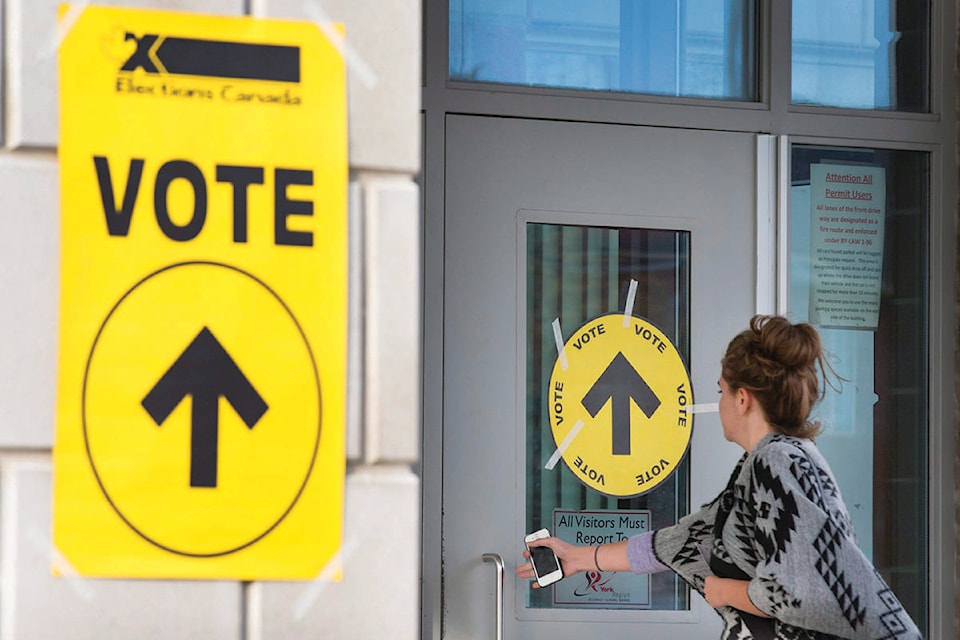 Woah. Read this.Fair election my a$$The Liberal upset the Conservative incumbent by 235 votes!!!by MaryAnn Gill(henrymakow.com)I worked as an Information Officer, in the Federal Election on April 28, 2025. I was at the - Dr Knox Ecole /School- Polling Station in Kelowna BC from 5:45 AM until 8:30 PM .I want to put in writing what I witnessed:1- Numerous voters , at least 50%, asked if they could use their pen, that they brought to vote. I said YES.LATER- after the polls closed, I was then asked to, do the Tally. ( Record the choice of vote on the ballot ) As the Deputy Returning Officer called out the Name of The Candidate selected, I was to record it.I noticed, None Of the ballots were in Pen. Only pencil. I know for a Fact, I sent most voters, that had a voting card, to desk # 17.The total of votes tallied at desk #17 were the most of any other desk in the Polling Station. I asked my DRO why none were in pen. No answer offered.These ballots were then put in an envelope and sealed. My signature is on record as I tallied the total.2- I noticed many voters turned away that had proper ID. I talked with many to ask why they were refused as these voters were very upset and felt very concerned that they were refused. It turned out that an ENTIRE APARTMENT BUILDING on Valley Road was missing from Elections Canada Information. Meaning none of the residents had voter cards. Without the cards they needed to provide valid ID. Without PROOF OF The Building Existing, none of the occupants could vote, even with valid Passports, Drivers Licenses, morgage docs, rental agreements, bills ect. It was mindboggling to watch these people turned away. I brought each person to the supervisor to help them vote and the Supervisor said there was nothing they could do without without Election Canada approval.3- Election Canada was not accessible most of the day. By the afternoon, no supervisor or senior officers could get through for any verification.4- over 60% of voters were under 35 at this location. There were a handful of 70 year old and up. This was remarkable to see such a massive amount of youth. I lost count of how many youth told me it was their 1st Time voting Federally. I asked for stickers or anything to hand out. There was nothing for 1st time voters or children attending with parents.5-One other Information Officer informed me, his wife was working at the head of Elections Office in the Landmark Building where all the Special Ballots were. These ballots were done very early and you wrote the Candidate name on the ballot. This was done for weeks. Other specail ballots are the mobile voting and mail in votes, ect. The ballots were not precounted. I spoke with this man after the polls closed and after we tallied to ask if his wife's still counting. He said they did not finish yet and that there was approximately 20,000 ballots. STRANGE that Kelowna called out a winner without that many ballots counted.6- Many voters spent the day going from Polling Station to Polling Station trying to vote because the Election Canada website was not working so no one could troubleshoot all these oddities with missing voters cards and locations of Polling Stations based on the address of the voters.7- I can assure all Canadians what I saw in only 1 poll would have a difference in the outcome of this riding. When an entire apartment building is missing, that is not a simple insignificant issue . Hundreds of voters are not counted and that will change the outcome of elections.My experience is of only 1 poll, in 1 riding, in 1 city, in BC . If it happened here I'm safe to understand it happened in other places. That is one of endless reasons that Elections Canada was not reachable or web sites working for most of the day.Very clear interference in the Voting Of eligible Voters witnessed today.
Woah. Read this.Fair election my a$$The Liberal upset the Conservative incumbent by 235 votes!!!by MaryAnn Gill(henrymakow.com)I worked as an Information Officer, in the Federal Election on April 28, 2025. I was at the - Dr Knox Ecole /School- Polling Station in Kelowna BC from 5:45 AM until 8:30 PM .I want to put in writing what I witnessed:1- Numerous voters , at least 50%, asked if they could use their pen, that they brought to vote. I said YES.LATER- after the polls closed, I was then asked to, do the Tally. ( Record the choice of vote on the ballot ) As the Deputy Returning Officer called out the Name of The Candidate selected, I was to record it.I noticed, None Of the ballots were in Pen. Only pencil. I know for a Fact, I sent most voters, that had a voting card, to desk # 17.The total of votes tallied at desk #17 were the most of any other desk in the Polling Station. I asked my DRO why none were in pen. No answer offered.These ballots were then put in an envelope and sealed. My signature is on record as I tallied the total.2- I noticed many voters turned away that had proper ID. I talked with many to ask why they were refused as these voters were very upset and felt very concerned that they were refused. It turned out that an ENTIRE APARTMENT BUILDING on Valley Road was missing from Elections Canada Information. Meaning none of the residents had voter cards. Without the cards they needed to provide valid ID. Without PROOF OF The Building Existing, none of the occupants could vote, even with valid Passports, Drivers Licenses, morgage docs, rental agreements, bills ect. It was mindboggling to watch these people turned away. I brought each person to the supervisor to help them vote and the Supervisor said there was nothing they could do without without Election Canada approval.3- Election Canada was not accessible most of the day. By the afternoon, no supervisor or senior officers could get through for any verification.4- over 60% of voters were under 35 at this location. There were a handful of 70 year old and up. This was remarkable to see such a massive amount of youth. I lost count of how many youth told me it was their 1st Time voting Federally. I asked for stickers or anything to hand out. There was nothing for 1st time voters or children attending with parents.5-One other Information Officer informed me, his wife was working at the head of Elections Office in the Landmark Building where all the Special Ballots were. These ballots were done very early and you wrote the Candidate name on the ballot. This was done for weeks. Other specail ballots are the mobile voting and mail in votes, ect. The ballots were not precounted. I spoke with this man after the polls closed and after we tallied to ask if his wife's still counting. He said they did not finish yet and that there was approximately 20,000 ballots. STRANGE that Kelowna called out a winner without that many ballots counted.6- Many voters spent the day going from Polling Station to Polling Station trying to vote because the Election Canada website was not working so no one could troubleshoot all these oddities with missing voters cards and locations of Polling Stations based on the address of the voters.7- I can assure all Canadians what I saw in only 1 poll would have a difference in the outcome of this riding. When an entire apartment building is missing, that is not a simple insignificant issue . Hundreds of voters are not counted and that will change the outcome of elections.My experience is of only 1 poll, in 1 riding, in 1 city, in BC . If it happened here I'm safe to understand it happened in other places. That is one of endless reasons that Elections Canada was not reachable or web sites working for most of the day.Very clear interference in the Voting Of eligible Voters witnessed today. -
Site: Zero HedgeWorkless 'Lost Generation' Suffering Mental Health Issues: ReportTyler Durden Wed, 04/30/2025 - 20:05
Authored by Rachel Roberts via The Epoch Times (emphasis ours),
The British Chambers of Commerce (BCC) is warning of a workless “lost generation,” caused partly by the number of young people suffering from poor mental health.
 A man wearing a mask walks past a mural painted as part of the Cities of Hope festival in 2016 and highlighting the effects of mental health, in Ancoats, northern Manchester, England, on Oct. 16, 2020.Oli Scarff/AFP via Getty Images
A man wearing a mask walks past a mural painted as part of the Cities of Hope festival in 2016 and highlighting the effects of mental health, in Ancoats, northern Manchester, England, on Oct. 16, 2020.Oli Scarff/AFP via Getty Images
The body is calling for immediate government action which it says is needed to help young people from generation Z, generally defined as those born between 1997–2012, to enter the workplace or education.
Its report, “Creating Job Opportunities for Gen Z,” released on Monday, follows research published last week which found the number of young people claiming benefits owing to poor mental health or neurodiverse conditions such as autism and ADHD was not economically “sustainable.”
‘Double Whammy’
Shevaun Haviland, director general of the BCC, said: “The UK’s active workforce is rapidly ageing, while the number of young people who are not in employment, education or training is at its highest level for a decade.
“Generation Z face a double whammy of increasing barriers to entering the workforce, and reducing opportunities as the number of vacancies continues to fall.
“But research shows the longer we leave this pool of talent to drift away from the workplace the harder it becomes for them to engage.”
The BCC, which represents a large number of smaller businesses, is calling on the government to spend more on mental health support and further education and for a more “collaborative approach” across the various Whitehall departments.
‘Rise of Anxiety’
Last week’s report from the Tony Blair Institute (TBI) pointed to soaring numbers of people reporting poor mental health and claiming benefits since the COVID-19 lockdown era.
“One clear trend is the rise of anxiety particularly since the COVID-19 pandemic. Data from the Annual Population Survey show that prior to the pandemic, self-reported levels of anxiety in the population were relatively stable. Since 2019, however, the number of people reporting high levels of anxiety has surged and remained high, with 23 per cent of working-age adults reporting ‘poor anxiety’ in 2023,” authors for the former prime minister’s organisation wrote.
Mental health conditions are now the most commonly reason cited by people across all age groups who are out of work owing to long-term sickness, the report by the TBI notes.
“The reasons behind this shift remain unclear. It may reflect a rise in true prevalence, but other factors could also be at play – such as distorted financial incentives within the system, overdiagnosis or changing public attitudes and awareness around mental health.
“Whatever the cause, one thing is clear: the current trajectory is unsustainable,” the authors concluded.
The study highlights a 168 percent reported increase in depression, anxiety, and stress among those aged 16–24 in the two decades ending in 2019, with a 42 percent rise seen across all age groups.
It also notes a doubling in the prescribing of ADHD medication since 2018–2019, with the younger age group the main driver behind this increase.
Surging Benefits Bill
Claims for mental health conditions have fuelled a nationwide surge in benefits payments since the lockdown era, with an estimated 25 percent in income tax predicted to be used to fund sickness benefits by the end of this decade, unless the trajectory changes.
An estimated 13.4 percent of all young people aged 16 to 24 were classed as NEET (“not in education, employment, or training”) in October to December 2024, an increase of 1.3 percent compared with October to December 2023, according to the latest release from the Office for National Statistics.
The precise figures are not reliable, because they are based on the statistics agency’s labour market survey, which is hampered by low response rates, especially for younger age groups.
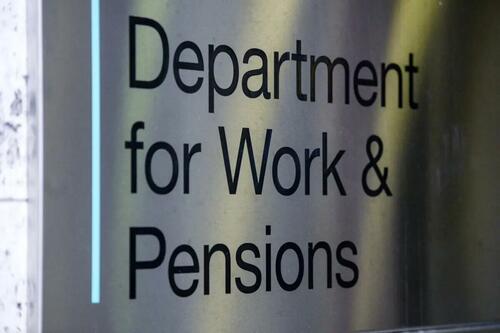 Signage for the Department of Work and Pensions in Westminster, London, in an undated file photo. PA
Signage for the Department of Work and Pensions in Westminster, London, in an undated file photo. PA
Research by The King’s Trust, carried out in 2022, shows that one in four classed as NEETs said they would like to work but cannot, owing to their poor mental health, with “lack of confidence” also cited as a major barrier to entering the workforce by 23 percent of young people.
Almost half (46 percent) of those surveyed told The King’s Trust researchers they have additional mental health issues or caring responsibilities owing to the lockdown era which meant they were out of work.
More than half (52 percent), said the longer they were unemployed, the harder they were finding it to get work, while 45 percent said being out of work meant they had lost confidence in their skills.
Youth Guarantee Scheme
Last month, the government announced a series of welfare reforms, including sweeping cuts to disability benefits and an expansion of so-called “back-to-work support,” which it said will help young people diagnosed with mental health problems to enter the workforce.
The Department for Work and Pensions (DWP) announced a Youth Guarantee Scheme in November, aimed at giving all 18- to 21-year-olds access to training, an apprenticeship, or support to find work, as part of a broader strategy aimed at tackling worklessness and ill health in the wider population.
Releasing its white paper, the DWP said: “Stark figures show almost one and a half million people are unemployed, over nine million people are inactive [and] a record 2.8 million people are out of work due to long-term sickness.
“Young people have also been left behind with one in eight young people not in education, employment or training, and nine million adults lack the essential skills they need to get on in work.”
The government proposes to set up eight youth “trailblazer” areas across the country, allocating £45 million to identify those “most at risk of falling out of education or employment and match them to opportunities for education, training or work,” with a further £40 million allocated to transform the Apprenticeship system.
However, the BCC said in its report that there was a lack of clarity as to how the youth guarantee scheme will work in practice, and whether there will be sufficient funding to last the entire course of the next Parliament.
“Details of how this will be delivered, and the role of employers, are still unclear. While employers want to support the initiative, the rising cost of employment and the squeeze on training budgets could restrict their ability to participate.”
The BCC noted that there is a “lack of incentive” for small- and medium-sized businesses to take on young people, particularly those classed as NEET, because of the financial risk.
“Employers report that young people are more resource-intensive to train and employ, due to their increased need for pastoral care, and their higher staff turnover. Combined with the likelihood that NEETs may have additional needs such as Special Educational Needs (SEN) or mental health challenges, resource-stretched SMEs may feel unable to offer the support needed,” the authors said, adding that the role of government should be to “derisk” this for businesses that take on and retain these young people.
-
Site: Public Discourse
It is common to hear that climate justice requires redistributive payments from those countries, like the US, that contribute most to greenhouse gas emissions to those poorer societies that contribute little to the problem but suffer disproportionately from the consequences. Cass Sunstein’s recently released book, Climate Justice, tries to prove this point, while also attempting to link the argument to a fundamentally Christian ethic.
But the argument has its flaws. For the sake of argument, let us say we agree that greenhouse gas emissions have contributed to the increase in average global temperature over the past century. (This is still debatable.) But the practical effects of that temperature increase are hard to measure. For instance, does the American contribution to greenhouse gas emissions make hurricanes worse? How much worse? Does it cause greater periods of drought? How much greater?
Sunstein writes, with unfounded certainty, that “Everyone knows that climate change is creating horrors.” But he spends little more than half a page addressing the causation question. He concludes by claiming that while causation problems “weaken . . . corrective justice claims,” they “are not fatal” to them.” But the fact that we have no way of proving whether a monsoon in Pakistan on a given date was caused by climate change, natural fluctuation of weather patterns, or some combination of the two seriously weakens Sunstein’s argument.
He does acknowledge, though briefly, the difficulty of assigning culpability for climate consequences. He also employs an analogy of a rich and poor individual, and their relationships and duties to one another, to illustrate the rich nation’s obligation to aid the poor. But the analogy is weak, and Sunstein admits that individuals are not nations. It is not clear that it is morally justified to require poor people in rich nations to contribute to the redistributionist climate change plan Sunstein advocates, or to permit rich people in poor countries to benefit from it. Perhaps, he admits, individual Americans cannot be held responsible for their outsized use of resources. But Sunstein suggests that Americans are guilty of tolerating political administrations that have not done enough on climate change. Only a few pages in the book are dedicated to the causation and culpability problems before Sunstein concludes, unconvincingly, that “[r]ough justice is still justice.”
Sunstein’s redistributivist approach on this issue is, he assures us, consistent with the Golden Rule of “Jesus of Nazareth,” as well as with the second of the two great commandments given in the Gospels (“Love your neighbor as yourself”). But Sunstein fails to substantiate these claims. “Do to others as you would like them to do to you” does not necessarily mean that those with greater resources must always give to those with fewer resources, no questions asked. Interpretation of “love your neighbor as yourself” requires an investigation of the nature of love of self. Sunstein fails to make such an investigation.
Yet the greatest flaw of Sunstein’s argument is his failure to acknowledge the supernatural character of the worldview driving it. Jesus instructed followers to orient themselves not simply to moral results in this world, but especially to the pursuit of moral rewards in the next. The Golden Rule and the command to love thy neighbor were hardly presented as contributions to the brand of social utopianism much later taken up by proponents of the so-called “Social Gospel.” The reason for reciprocity and a spirit of love was not the production of a this-worldly ethic of material equality, but a contribution to the spiritual perfection of souls whose telos is heaven. One makes himself more like Jesus, and therefore more spiritually meritorious, through compassion and love toward others. For Sunstein, this approach to life has material benefits. But for the Christian, acts of love matter for their own sake.
Another point of disconnect is evident in Sunstein’s confident theorizing about the comparative value of human life now and in a hypothesized future. One of his central premises is that “people who are alive now do not deserve greater attention and concern than people who will be born twenty years hence, or forty years hence, or a hundred years hence.” “Intergenerational neutrality” is the principle all nations should follow, he urges. This is consistent with the abstract humanism of much of the political Left. Human lives are objects of value in a theoretical sense, whether actually existing or only possible or probable at some future point. But Christianity rejects abstraction on this issue. It is real human souls that are sacred, and we encounter them in this world only in their embodied forms. Those persons who have lived and died are recognized as occupying the same spiritual status, though we now cannot relate to them morally in the same concrete way we can to those still alive.
But those yet to come are abstractions. Contemplation of the end times is a central metaphysical foundation of Christianity, while materialist redistributionism can hope for nothing beyond the immanent frame. Sunstein’s certainty about what we owe to those who may or may not ever come into existence is beyond the reasonable knowledge of the faithful Christian.
Even if we limit our understanding of the Golden Rule and love of neighbor to material, immanent matters, a Christian respondent to Sunstein might inquire whether the “doing” here on the part of rich countries is as harmful as he suggests. Sunstein is certainly right that any negative environmental effects of consumption might disproportionately affect poor countries. But he has nothing to say about how wealthy countries’ production of climate-harming products can help poorer ones. For example, cutting back on oil and gas use in countries like the US will harm regions that are producers and exporters of petroleum and natural gas (Oil is Africa’s greatest export.) Also, pharmaceutical production is a significant cause of greenhouse gas emissions. And poor countries, especially those in Africa and the Middle East, import food, the production and shipping of which create greenhouse gas emissions. If we cut back on that, those countries will have less food to import, and this will harm their populations.
Sunstein does not consider these effects—he does not even acknowledge the existence of the positive benefits. He worries that poor countries near the equator will suffer increases in malaria burden because of climate change. But he does not acknowledge that some portion of our greenhouse gas emissions involves work on malaria vaccines that might eradicate the disease.
Sunstein assures readers that the only morally defensible position is for all countries to consider the whole world, and not just their own needs, in managing activities that might harm the climate. The position of Christianity on love of and preference for one’s own country and, more generally, the moral correctness of attending more carefully to those closer in relation than to those more distant (the “ordo amoris” explained by St. Augustine and, later, St. Thomas Aquinas), is more complicated than Sunstein acknowledges. Pope St. John Paul II was, for example, opposed to “an unhealthy nationalism,” but he writes in Memory and Identity that patriotism, the specific love each of us has for his own country and his countrymen, “leads to a properly ordered social love.” In his letter to the people of Poland, “My beloved Fellow-countrymen,” he argues that “[l]ove of our country. . . springs from the law of the human heart. It is a measure of man’s nobility.”
It is undeniable that the Church calls Christians to aid those who suffer. But real demographic and political realities frame this responsibility. Sunstein provides no answers to reasonable questions about a country’s obligation to curtail its use of sustaining industries, even those that cause harm on a global scale. It is telling that he is so supremely confident in the ability of Americans to endlessly produce material abundance while he is simultaneously so lacking in knowledge about the dominant spiritual foundations underlying that productivity.
Image by malp and licensed via Adobe Stock.
-
Site: Zero HedgeCalifornia Child Sex Trafficking Bill Advances After Language Removed To Make Purchase Of 16 & 17-Year-Olds A FelonyTyler Durden Wed, 04/30/2025 - 19:40
California lawmakers on the Public Safety Committee advanced a bill that would crack down on child sex trafficking - but only after language was removed that would have made it a felony to purchase 16 and 17-year-olds.
Assemblymembers Mia Monta (D) and LaShae Sharp Collins (D) abstained from the vote.
Assembly Bill 379, introduced by Assemblymember Maggy Krell (D), targets buyers of commercial sex. Krell previously worked at the California DOJ, where she became known for prosecuting the operators of Backpage.com - which was shut down in 2018 for facilitating sex trafficking and prostitution.
The bill is opposed by Assemblymember Mark Gonzalez (D-Los Angeles), who says the bill would disproportionately impact communities of color.
Democratic Assemblyman is concerned that this bill addressing human/sex trafficking (and was supposed to make it a felony to solicit 16 and 17 years old) will disproportionately affect black and brown communities and LGBTQI+ community. pic.twitter.com/rDPO4GeMw9
— California Republican Party (@CAGOP) April 29, 2025So, it's racist to crack down on child sex trafficking. Got it.
The bill, introduced in February, includes provisions to create a misdemeanor for loitering with the intent to solicit commercial sex - and imposes fines as high as $25,000 for soliciting minors under the age of 16. It also allows felony human trafficking charges for repeat offenders who buy sex from minors.
It also would create a first-of-its-kind Survivor Support Fund - which would go to community-based organizations led by survivors of human trafficking.
As the Epoch Times notes further, while introducing the bill to the committee, Krell said it would support victims and give law enforcement better tools to prosecute the buyers.
“Demand is the buyers,” she said. “It is the rows of cars of men lined up on street corners to buy teenagers for sex,” she said. “Without the buyers, we don’t really have sex trafficking.”
The bill drew support from the California District Attorneys Association, the California Police Chief Association, the San Bernardino County Sheriff’s Department, the City of Stockton, the Association for L.A. Deputy Sheriffs, the League of County Board of Supervisors, and more.
The bill also reinstates penalties for offenses that were decriminalized by a 2022 California law, such as loitering with the intent to purchase a victim. Those convicted would face a misdemeanor and pay up to a $1,000 fine that would go toward the fund for survivors.
Opponents, including survivors of child trafficking, focused on this aspect of the law in their testimony.
Jess Torres, a child trafficking survivor and director of programs at Rising International, respectfully opposed the bill, saying it hinges on a vaguely defined suspicion of intent to do something criminal, rather than evidence.
“This bill will only escalate violence against survivors because persons who are trafficked in commercial sex are harmed when they operate in a criminalized environment,” Torres said. “When buyers believe they are taking on greater risk, they often become more demanding, and that pressure frequently becomes compromising.”
Leela Chapelle of the Coalition to Abolish Slavery and Trafficking also opposed the bill, arguing that loitering with intent laws harm communities they claim to protect and are unconstitutional.
“We do believe that this will cause the same issues that we have seen over and over again, that we spend our resources clearing the criminal records of survivors, that should not have happened in the first place—these criminal records that prevent them from lives of stability,” Chapelle said.
Opposition also included the LA Public Defenders Union and the San Francisco Public Defender’s Office.
The bill is now due to advance on to the Assembly Appropriations Committee before it can advance to a full vote on the Assembly floor and the Senate.
-
Site: LifeNews
The Hialeah Heartbeat of Miami pregnancy help clinic had a triple slam dunk during the month of March.
Heartbeat of Miami;s press release noted the “March Madness” in college basketball was also true in pregnancy care.
Executive director Martha Avila said she had been in the center’s boutique on the phone one day in March with a representative from the Florida Pregnancy Care Network. An ultrasound was taking place in the next room.
“All at once, I heard this commotion,” Avila told Pregnancy Help News during a phone interview.
HELP LIFENEWS SAVE BABIES FROM ABORTION! Please help LifeNews.com with a donation!
She put her caller on hold to see what was happening.
The women in the next room were shouting with shock and joy. Not only had a baby been discovered on the screen, but three babies were visible.
Triplets.
According to the release:
“When (the mom) came to us she was very high risk for abortion,” Avila said.
“(The client) had been in a relationship with her boyfriend for three years, living with her mother, but now, facing this unexpected news, she didn’t know what to do. The timing just didn’t feel right. When the pregnancy test came back positive, her heart sank, but after a long, heartfelt counseling session, (the client) bravely agreed to have the ultrasound we offered to confirm if the pregnancy was viable.”
The ultrasound revealed three babies at seven weeks, four days gestation.
Heartbeat of Miami provided a video of the client who is Cuban and a Spanish speaker.
She said, “I still cannot believe it!”
Heartbeat of Miami’s release stated that everyone in the room, the staff, client and the client’s mother, was in tears.
“The sound of three tiny heartbeats filled the room, the proof of life that brought tears to everyone’s eyes,” the release said.
The client Facetimed her boyfriend, the father of the babies, who also cried as he saw the images.
 Triplets saved at Heartbeat of Miami/Heartbeat of Miami
Triplets saved at Heartbeat of Miami/Heartbeat of Miami
Avilla said many of the women who come to their clinic are from Cuba.
“Cuba calls abortion a ‘deregulation,’” Avila said, noting it is a “very atheist country.”
“We told her, ‘See how God does things?’” Avila said.
Avilla said the client’s mother was a support for her, and Avila was not surprised.
“In Cuban families there is a lot of support from the grandmothers,” she said. “You could see both of them crying. It was very emotional.”
Heartbeat of Miami provided the new mom of multiples with referrals for emergency medical assistance, the name of a high-risk pregnancy provider, diapers and prenatal vitamins. They are prepared to keep in touch with this growing family.
This is proof once more of the ever-present help of pregnancy help centers. Heartbeat of Miami has beaten the odds of its enemies who tried to destroy the image of one of its locations in 2022 after the overturning of Roe v. Wade.
They are a network that relies on God to fight their battles and provide victory for life, Avila said.
“God lines up everything for His honor and His glory,” Avila said, “It’s not like we say to women, ‘Ok, have your baby, goodbye.’ God provides for us in our hardest scenarios.”
This is not the first set of triplets to come out of the Heartbeat of Miami offices. The center has been present in five locations for 18 years. This client’s “March Madness” is the fifth trio staff has witnessed within its locations.
“Our first set of triplets just turned 11 years old,” Avila said, adding mom was 47 at the time, making history at the University of Miami Hospital.
“We are all still friends,” she said of the first family, “and (staff members) were there when the triplets were born.”
LifeNews Note: Tabitha Goodling has been writing for media outlets for more than 20 years in her home state of Pennsylvania. She has served as a client services director at her local pregnancy center since 2018. She and her husband are raising four teenage daughters, which include a set of triplets. This column originally appeared at Pregnancy Help News.

The post Triplets Saved When Mom Changes Her Mind on Abortion appeared first on LifeNews.com.
-
Site: RT - News
The two countries have agreed to establish a joint “reconstruction” investment fund.
Ukraine and the US signed an agreement on Wednesday that will direct a portion of the revenues from the development of Ukraine’s natural resources into a joint investment fund.
Kiev hopes the deal will incentivize US President Donald Trump to maintain military and financial aid to Ukraine amid the conflict with Russia. The US has been attempting to broker a ceasefire since February, as Ukrainian leader Vladimir Zelensky and other top officials in Kiev have accused the Trump administration of promoting “pro-Russian” narratives.
The two sides initially planned to sign the agreement in February, but the deal fell through at the last minute after a meeting between Trump and Zelensky devolved into a heated argument. According to reports, US officials originally pushed for 50% American ownership of Ukraine’s rare-earth minerals – which Zelensky rejected at the time.
This live stream has ended.
-
Site: LifeNews
The Pregnancy Resource Center (PRC) of Salt Lake City and American Fork, a trusted provider of compassionate, life-affirming care for women navigating unplanned pregnancies, is pleased to learn of Planned Parenthood’s decision to close two of its Utah-based clinics.
By closing two locations at opposite ends of the state, while keeping two abortion locations open in Salt Lake City, Planned Parenthood once again emphasizes their organization’s tragic prioritization of abortion services over comprehensive women’s healthcare.
The Pregnancy Resource Center’s Executive Director, Evangeline Sanders, commented:
“As Planned Parenthood closes two of their Utah clinics, they further demonstrate a focus on abortion rather than offering comprehensive care and compassionate alternatives to abortion for women. The Pregnancy Resource Center clinics exist to ensure each woman receives confidential care and real support when faced with an unexpected or unsupported pregnancy. All services are provided at no charge, including free pregnancy tests, confirmation ultrasound exams, pregnancy options consultations, STI testing, practical support and much more. As more women are searching for alternatives to abortion-focused clinics, the PRC offers individualized support for women and their families. Our compassionate medical staff and trained patient consultants walk alongside each woman, empowering her to make confident choices for herself and her family.
HELP LIFENEWS SAVE BABIES FROM ABORTION! Please help LifeNews.com with a donation!
“I am grateful for the network of Pregnancy Resource Centers that exist throughout the state of Utah that ensure no women facing an unplanned pregnancy has to navigate her pregnancy journey alone.”
The Pregnancy Resource Center of Salt Lake is a non-profit, 501(c)(3) organization in its 40th year of operations. The PRC specializes in offering caring and confidential support for women facing unplanned pregnancies and pregnancy loss at no charge. The PRC provides compassionate medical care, ongoing parenting support and mentorship for mothers and fathers, and myriad community referrals to its patients and clients.
For more information, please contact the Pregnancy Resource Center at 801-363-5433.

The post Planned Parenthood Abortion Biz Closes Two Centers in Utah appeared first on LifeNews.com.
-
Site: The Orthosphere
Pope Francis is dead. To “living Magisterium” Catholic apologists, this means his writings are now as totally incomprehensible and inaccessible as are those of his predecessors, of the Church Councils, and of Sacred Scripture. We must wait for his successor to tell us what any of it means, and what of it belongs to the class of things we should no longer be “rigid” about.
For reasons that needn’t be rehearsed, I consider Francis to be the second-worse pope in the Church’s history. (It would be impossible for a pope to be worse than John XXIII, because the Accursed Council demolished more than it left standing, so no further destructive work could ever match it.) However, he was certainly not all bad. For one thing, he had a better grasp of the moral law than does Donald Trump, who turned the Republican Party into Abortion Party #2, IVF Party #1, and Jews-may-never-be-criticized Party #1. (Marvel for a moment over the utter insanity that foreigners are welcome to badmouth America, whites, and Christians to their hearts’ content, but are expelled for criticizing Israel!) Of course, we expect more of a pope than we do of a leader of the Great Satan. In fact, I think Francis has given the Church some genuine insights from which she can benefit.
He is best in small doses, no more than a couple of words. First, “social friendship” as the goal of Catholic social teaching. As I’ve written before, “‘social friendship’ is an enormous improvement on the harsh and punitive ‘social justice’. Just as with a friendship or a marriage, while community is harmed by gross unfairness, it is surely destroyed by single-minded concentration on who should be recognized as right and who deserves to be punished.”
I also endorse Divine Mercy as an admirable summary of the Christian message. Remember how Pascal defended the Christian religion, saying that only the figure of Christ teaches us man’s greatness and wretchedness both at the same time. The same could be said of God’s mercy, of which Jesus Christ is the expression. To say that God is merciful is to acknowledge that man is monstrously sinful, that our only hope is in God’s grace, and that as a loving Father we can be sure that this grace will never be denied us; it is to say these all at the same time.
I am also grateful for Francis’s final gesture in this Jubilee Year of drawing attention to the theological virtue of hope. I am coming to appreciate that the lack of this virtue is indeed at the heart of most of the Church’s woes, of our admiration with worldly pomp, our craving for worldly luxury, our desperation for worldly approval. Our desires are not ordered as they should be; prioritizing God is at best a duty, one we are grateful to get out of. Our fears and desires are for this life, of protecting or “improving” the world and finding our own temporal happiness within it. If our hearts’ greatest desire were to be united with God in Heaven, we would think and act very differently. To live rightly, we must desire rightly.
-
Site: Zero HedgeFederal Firefighter Safety Workers Reinstated For NowTyler Durden Wed, 04/30/2025 - 18:25
Authored by Zachary Stieber via The Epoch Times (emphasis ours),
Employees working in coal mining and firefighter safety who had been slated for termination have been asked to return to work, according to a U.S. senator and a union that represents them.
 Hector Medrano, a firefighter from California, watches the Black Cove Fire as he coordinates a helicopter water drop in Saluda, N.C., on March 26, 2025. Allison Joyce/AP Photo
Hector Medrano, a firefighter from California, watches the Black Cove Fire as he coordinates a helicopter water drop in Saluda, N.C., on March 26, 2025. Allison Joyce/AP Photo
The workers are employed by the National Institute for Occupational Safety and Health (NIOSH), which is part of the Department of Health and Human Services (HHS).
As part of an HHS overhaul, hundreds of NIOSH employees were placed on administrative leave and set to be fired, union officials say.
Employees who work for the Coal Workers’ Health Surveillance Program and the Fire Fighters’ Fatality Investigation and Prevention Program are being reinstated temporarily, the American Federation of Government Employees Local 3430 said on Wednesday. The reinstatement action “allows these dedicated professionals to return to their critical roles in advancing worker safety and health across the country.”
The exact number of affected workers is unclear.
The workers are still on the list to be fired as part of mass terminations scheduled for June 2, the union said.
Sen. Shelley Moore Capito (R-W.Va.), who has been in conversations with Health Secretary Robert F. Kennedy Jr. about reversing some of the cuts, also said she understood the reinstatements to be temporary.
“I am encouraged that some NIOSH functions for coal miner and firefighter safety are slated to resume with some select staff returning to work this week. But my understanding is that this is temporary, so my focus will continue to be on working with HHS on permanently restoring these functions and personnel in the most efficient and effective manner,” Capito wrote on social media platform X.
HHS did not respond to a request for comment.
Kennedy said on X this week that “Firefighter health and safety programs remain a top priority” and that, as HHS works on streamlining operations, “critical services of NIOSH will remain intact.”
A West Virginia coal miner who sued the government in federal court over the cuts said in a recent filing that HHS cannot carry out programs detailed in federal law, such as a screening program for Black Lung, without the workers who were set to be fired.
The government has not yet responded to the legal action. A judge ordered the government to respond by May 2 and to appear in court on May 7.
Kennedy in March announced that HHS would slash about 10,000 jobs in a bid to make the agency more efficient and effective. After many workers were fired, Kennedy told reporters that some of the layoffs were mistakes and that certain employees were being brought back.
-
Site: Zero Hedge"We're Going To Start Getting It Back": Trump Admin Begins Collecting On Student Loans In DefaultTyler Durden Wed, 04/30/2025 - 18:05
Last week we highlighted the next economic shock; a student loan default wave that could cause a $63 billion hit to GDP.
And here it comes. During Wednesday's Cabinet meeting, Education Secretary Linda McMahon said "We're going to start getting it back," adding "For those people who have borrowed money and have not been paying -- that's just not to be punitive, there are many ways that they can go online to understand how they can get back into the right payment structure. Because when they're in default, they can't buy a house, they can't buy a car, their credit scores go down." h/t Jennifer Jacobs
As we reported last week (full note available to premium subscribers), student-loan delinquencies began climbing after the pandemic-era forbearance on repayment ended in September 2023. The Biden administration allowed a year for payments to fully ramp back up, which temporarily suppressed delinquency rates. Now, though, missed payments are crossing the 90-day threshold and showing up on borrowers’ credit reports.
* * *
Support independent media. Grab a ZeroHedge hat at the ZH Store, or buy any 2 bags of coffee and receive a free ZeroHedge Tumbler!
The New York Fed estimates 15.6% of federal student-loan balances — more than $250 billion — were past due by the end of the ramp-up period, affecting 9.7 million borrowers. As these delinquencies hit credit reports, borrowers face steep declines in their credit scores and, more importantly, sharply reduced access to credit.
That said, delinquent borrowers could still enroll in income-driven repayment plans offered by the Department of Education, and the scale of past-due loans may have shifted since the end of the on-ramp period. Some borrowers who were past due may have come back into compliance since.
Overall, if 9.7 million borrowers default and face declining credit scores, BBG estimates a drag on annual PCE spending of 0.1% point to 0.3%. In the worst-case scenario, it could reduce PCE spending growth by as much as 0.4% by year-end... an outcome that is extremely deflationary, just in case Jerome Powell is still debating whether or not to pull the plug on rate cuts.
-
Site: Zero HedgeKremlin Mocks Zelensky Dragging His Feet On Peace: 'US Can't Sign Deal On Behalf Of Kiev'Tyler Durden Wed, 04/30/2025 - 18:00
The Kremlin has called out the US and Ukraine, for what looks like an emerging trend of Washington essentially dragging Zelensky by the ear toward a peace deal. Russia is saying that ultimately it cannot sign a deal with the United States - but that for the war to end, a legitimate settlement must be made bilaterally with Kiev.
Putin spokesman Dimitry Peskov said Wednesday that even though Russia welcomes the Trump administration's mediation efforts, the reality remains that "A peace deal should be done with the Ukraine, not with America."
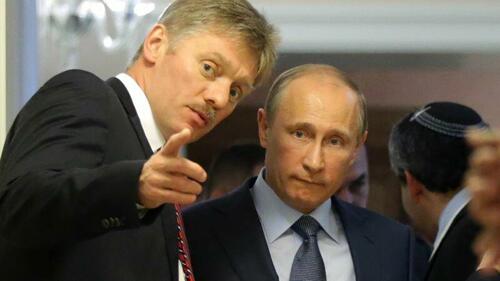 Via CNN
Via CNN
"Unfortunately, we haven’t heard any statements in this context from Kiev, so we don’t know whether Kiev is ready or not," Peskov emphasized, strongly suggesting that the Ukrainian side isn't really seeking peace.
The Kremlin reiterated that currently contacts with Ukraine are only at the military level, to broker things like POW exchanges and returns of the wounded and deceased.
President Trump has of late been expressing frustration, somewhat lashing out at both sides - though he's seemed especially frustrated with Zelensky. Ukraine and the US were expected to finally sigh a minerals deal on Wednesday, but a "last minute hurdle" prevented that.
Russian Deputy Foreign Minister Mikhail Galuzin actually had harsher statements, filling in more details beyond Peskov's exchange with reporters.
"Not a single attempt to declare a ceasefire has in practice been supported by the Kiev regime, which continued to violate the truce. This shows that the regime is staking everything on war," Galuzin told Izvestia, adding: "moreover, Kiev’s self-imposed legislative ban on negotiations with Russia remains in effect."
And separately, Russian roving diplomat for the Donbass, Rodion Miroshnik, said "There is no basis to suggest that Ukraine is ready to alter its actions on the ground in any way. We do not see this happening. All we observe is erratic, pseudo-peacekeeping rhetoric. Hollow declarations of peace are not enough, we do not see any indication that Ukraine is demonstrating or confirming a willingness to pursue a ceasefire."
To review, Russia has this month put forth the following key demands to end the war:
- an end of Ukraine's ban on negotiations with Russia,
- for Ukraine to go back to the status of a neutral and non-aligned country in accordance with the Declaration of State Sovereignty of Ukraine in the 1990's,
- an end of the policies of legally and physically destroy everything Russian: the language, media, culture, traditions, and Russian orthodoxy
- the international recognition of Russia's ownership of Crimea, the DPR, LPR and the Kherson and Zaporizhia regions.
Trump argues it has been easier to deal with Putin than Zelensky pic.twitter.com/TsajLRSaBB
— Glenn Diesen (@Glenn_Diesen) April 29, 2025The reality remains that neither Ukraine nor Washington seem any closer to accepting all of these terms, despite months of back-and-forth dialogue, and several rounds of US and Russian delegations meeting. Meanwhile, Zelensky has been coming under threat from some of his own commanders as they warn him not to give up territory to Russia for the sake of peace.
-
Site: RT - News
The agreement granting Washington access to the country’s natural resources comes amid American military aid cuts and growing tensions over Trump’s peace initiative
Washington and Kiev have signed a minerals deal granting the US access to developing Ukraine’s natural resources, US Treasury Secretary Scott Bessent and Ukrainian Economy Minister Yuliya Sviridenko announced on Wednesday.
The agreement comes as Ukraine seeks security guarantees from Washington as part of a potential peace deal with Moscow that US President Donald Trump is working to negotiate.
The deal sees the establishment of the United States-Ukraine Reconstruction Investment Fund. “President Trump envisioned this partnership between the American people and the Ukrainian people to show both sides’ commitment to lasting peace and prosperity in Ukraine,” Bessent said in a statement.
The full text of the agreement has not yet been released. Sviridenko said the fund will be jointly managed by Ukraine and the US “on a 50/50 basis,” and that “neither side will hold a dominant vote.”
She said that 50% of the revenue from new licenses in the fields of critical materials, oil, and gas will be directed to the fund.
Read more Zelensky demands ‘at least’ Israel-style support from US
Zelensky demands ‘at least’ Israel-style support from US
“Full ownership and control remain with Ukraine,” the Ukrainian minister added. “It is the Ukrainian state that determines what and where to extract. Subsoil remains under Ukrainian ownership – this is clearly established in the Agreement.”
According to Sviridenko, the deal does not alter privatization processes or the management of state-owned companies. She said that the oil and gas giant Ukrnafta, as well as Energoatom – the operator of Ukraine’s nuclear power plants – will remain under government ownership.
While the Biden administration approved large aid packages for Ukraine, including the supply of advanced weaponry, the current US president has focused on shifting the burden of assistance to Kiev’s European supporters. In February 2025, the US went so far as to halt all military support to the country following a tense Oval Office meeting between US President Donald Trump, US Vice President J.D. Vance, and Ukrainian leader Vladimir Zelensky.
According to various estimates, Washington has provided at least $170 billion to Kiev. The White House insists those expenses should be compensated via access to Ukraine’s mineral resources, including rare earth elements critical to high-tech industries.
Negotiations between the two countries over a minerals agreement have been underway since the early days of Trump’s return to office. A preliminary memorandum of intent was signed on April 17, but the US president has publicly criticized the delay in finalizing the deal. In a post on Truth Social on April 25, he accused Zelensky of being “three weeks late” in signing it and demanded that it be completed “immediately.”
Although the minerals agreement does not explicitly include US security guarantees for Ukraine, it is described as “an expression of a broader, long-term strategic alignment . . . and a tangible demonstration of the United States of America’s support for Ukraine’s security, prosperity, reconstruction and integration into global economic frameworks,” according to the Financial Times.
Read more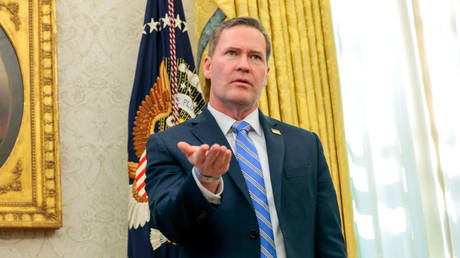 Ukraine one of the world’s most corrupt countries – Trump adviser
Ukraine one of the world’s most corrupt countries – Trump adviser
Zelensky said last week that Kiev hopes to receive long-term security assistance from Washington, similar to the US-Israel model.
Meanwhile, Trump declined to clarify whether the US would continue to provide military aid to Ukraine if a peace agreement between Kiev and Moscow is not reached. “I want to leave that as a big, fat secret, because I don't want to ruin a negotiation,” he said in an interview with ABC News on Tuesday.
Axios reported last week that Washington had given Kiev what President Donald Trump called a “final offer” to resolve the conflict. The United States has expressed mounting frustration over the lack of progress in the peace negotiations. US Secretary of State Marco Rubio said last week that Washington may withdraw from the talks entirely if they stall.
In February, Reuters cited estimates from two Ukrainian think tanks stating that about 40% of Ukraine’s metal resources are now under Russian control.
According to the Center for International Relations and Sustainable Development (CIRSD), between 50% and 100% of the lithium, tantalum, cesium, and strontium deposits claimed by Ukraine are located in territories currently controlled by Russia.
-
Site: Zero HedgeIllinois Judge Slams 'Jack-Booted, Ham-Handed' Arrest Of Wisconsin Judge As 'Reminiscent Of Hitler And Mussolini'Tyler Durden Wed, 04/30/2025 - 17:40
Authored by Catrina Barker via The Center Square,
An Illinois appellate court judge says the arrest of Wisconsin Judge Hannah Dugan was "reminiscent of King George, Hitler and Mussolini." An Illinois constitutional attorney disagrees.
Judge James Knecht criticized the Trump administration's heavy-handed courthouse arrest of Dugan.
“The administration practiced jack booted, ham handed, procedures to arrest Judge Dugan at the courthouse. Reminiscent of King George, Hitler and Mussolini,” Knecht wrote.
David Shestokas, a constitutional attorney who ran in the Republican primary for Illinois Attorney General, accused Dugan of defying federal authority by helping an illegal immigrant avoid Immigration and Customs Enforcement agents.
“The problem is, she just exhibited her own disrespect for the authority of the federal government. In terms of providing her with your typical kind of nonviolent courtesy, you know, we'll give you a call and you can come and turn yourself in sort-of-thing. She had just demonstrated her own disrespect for the federal officers,” said Shestokas.
Knecht called the arrest an “overreach.” He suggested the proper approach would have been to contact Dugan’s chief judge, the court administrator, and Wisconsin’s chief justice to clarify how state judges should interact with ICE.
“Am I asking for a judge to receive special treatment? No – Judge Dugan is being used as an example to strike fear into the heart of state authorities, judges included,” stated Knecht. “The state judiciary and the federal authorities are obligated to cooperate. One does not encourage such cooperation by arresting a judge to punish her for what may have been a mistake in judgment, or a reaction to the furor over immigration policy.”
Shestokas said physically arresting the judge is a bit unusual.
“[The federal authorities] were clearly interested in sending a message … that it didn't matter who you are or what position you hold,” said Shestokas. “If, in fact, you aided and abetted someone who was lawfully to be detained by ICE and you interfered with that, you've broken the law and you're subject to arrest.”
Dugan allegedly led Mexican national Eduardo Flores-Ruiz and his lawyer out a restricted jury door to avoid ICE agents, a route the judge controls, according to Shestokas.
Knecht said on social media that he usually sleeps peacefully. However, he suggested he was awake thinking about Dugan’s arrest.
“I did not sleep well last night. I usually sleep peacefully. I was thinking about Judge Dugan in Wisconsin,” stated Knecht. “Some states and cities have laws or policies to not assist federal authorities such as ICE or FBI – of course, not assisting is not the same as obstructing. For me, the issue is not what Judge Dugan did (I do not support how she handled this) but how the authorities responded.”
In 2023, Knecht received $249,337 in pension benefits from the Illinois Judges Retirement System.
Shestokas said Knecht’s social media post reflected a call for judges to be treated with a certain level of respect.
“I have no idea why there was any suggestion that there should be a consultation with the Wisconsin Supreme Court to determine how judges are supposed to do things. We know they’re not supposed to help criminals avoid arrest, prosecution, or detention,” said Shestokas. “It's not unusual at all to inform the judge that there's agents of whatever law enforcement agency outside intending to arrest someone when they leave the courtroom.”
Shestokas said no one uses the jury door without the judge’s permission, and despite being courteously informed about the planned arrest, she responded by allegedly breaking the law.
“Judge Duggan was given a heads up that there were agents outside the courtroom preparing to arrest an individual that was in their charge with the crime. And after she was given that heads up, apparently she sent a message to the agents that they should go visit with the chief judge. And then apparently she took the guy they wanted outside the side door, out the jury door,” said Shestokas.
Knecht served as a law clerk to Illinois Supreme Court Justice Robert C. Underwood from 1973 to 1974, then as an Associate Circuit Judge from 1975 to 1978, and as a Circuit Judge from 1978 to 1986, before being elected to the Fourth District Appellate Court in 1986.
-
Site: Zero HedgePakistan Warns It Has 'Credible Intelligence' India Will Attack Within 36 HoursTyler Durden Wed, 04/30/2025 - 17:20
It is impossible to know the degree to which this is typical conflict propaganda, but Pakistan is claiming that India is planning a military strike on its territory, and that this is coming within less than one to two days.
"Pakistan has credible intelligence that India intends to launch a military strike within the next 24 to 36 hours, using the Pahalgam incident as a false pretext," Pakistan's Information Minister Attaullah Tarar wrote on X Tuesday evening.
 Via Middle East Institute
Via Middle East Institute
"Any act of aggression will be met with a decisive response. India will be fully responsible for any serious consequences in the region," Tarar added.
India has charged that Pakistan harbored the terrorists responsible for the attack on Indian-administered Kashmir which came one week ago and left 26 dead. They were mostly tourists from India visiting the popular and picturesque spot, and the gunmen chose them for execution on the spot because they were Hindu.
Gunfire has already been exchanged between the nuclear-armed rivals over the last several days, with neither side reporting any casualties or major incidents.
The last time there was a major terror attack targeting Indians in Kashmir, the Indian Air Force did respond:
The worst attack in recent years in Indian-run Kashmir was at Pulwama in 2019, when an insurgent rammed a car packed with explosives into a security forces convoy, killing 40 and wounding 35.
Indian fighter jets carried out air strikes on Pakistani territory 12 days later.
Pakistan has meanwhile welcomed China and Russia's efforts to mediate de-escalation, also as the United Nations has urged restraint.
US Secretary of State Marco Rubio has said he is holding dialogue with officials from both sides. "We are reaching out to both parties, and telling, of course, them to not escalate the situation," a statement from the State Dept said.
The only significant military action so far is that Pakistan's military said Tuesday it shot down an Indian spy drone over Kashmir, alleging that the UAV breached Pakistani-administered territory.
Pakistan has credible intelligence that within the next 24 to 36 hours, India is planning military action against Pakistan based on baseless and fabricated accusations related to the Pahalgam incident. – Information Minister Attaullah Tarar#IndiaPakistan #PakistanBehindPahalgam pic.twitter.com/8juDCkUFCJ
— Noor Fatima (@Fatima_Zahra120) April 30, 2025The drone reportedly breached the Line of Control (LOC), Pakistani state-run media said, and it was subsequently shot down amid the air space incursion. Pakistani defense officials described to The Associated Press that the drone flew hundreds of feet into Pakistani-administered Kashmir.
And alarmingly, a Pakistani minister, Hanif Abbasi (though he's not in defense or security) days ago warned that Pakistan's nuclear arsenal of more than 130 missiles was "not kept as models" and was aimed “only for India … these ballistic missiles, all of them are targeted at you" - as cited in The Guardian.
-
Site: RT - News
The agreement stops short of actually handing Washington control over Ukraine’s resources, Reuters has reported
Washington and Kiev are set to sign a major mineral resources agreement, which US President Donald Trump has been pushing for months. Ukrainian Economy Minister Yulia Sviridenko has flown to the US to seal the deal, Prime Minister Denis Shmigal said on Wednesday, adding that the document should be signed within 24 hours.
Neither the US nor Ukraine have officially presented the details to the public yet. Reuters, which claims to have seen a draft of the document, reported that it would involve creating a joint fund that would receive half of all profits the Ukrainian government gets from any new natural resources permits issued in Ukraine. The document reportedly does not specify how the money will be spent or who controls the spending decisions.
The agreement would provide the US with preferential access to any new Ukrainian resource deals but would not give it direct control over Ukraine’s mineral resources or gas infrastructure, according to Reuters. Kiev also reportedly refused to include any requirements that it pay the US back for billions of dollars spent on military assistance. America can still count any new military aid as its contribution to the joint fund, according to Shmigal.
Read more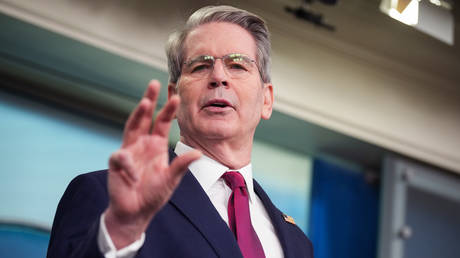 Ukraine backtracked on resources deal – US Treasury
Ukraine backtracked on resources deal – US Treasury
The two sides have reportedly hit a last-minute snag, according to sources cited by Reuters and CNN. Washington reportedly insists on signing two technical documents detailing certain provisions of the deal along with the agreement. Kiev insists that the agreement must first be ratified by the Ukrainian parliament before other documents can be signed, according to the Financial Times.
Speaking at a cabinet meeting on Wednesday, US Treasury Secretary Scott Bessent said Ukraine sought to make last-minute changes to the already agreed deal. “We’re sure they’ll reconsider that. We are ready to sign this afternoon, but they aren’t,” he told journalists.
Trump stated that “we’ve made a deal where our money is secure where we can start digging and do what we have to do.” It is unclear if he was referring to the original US proposal or the final deal. The White House has yet to make an official announcement.
-
Site: Zero HedgeHegseth Ends Women's Leadership ProgramTyler Durden Wed, 04/30/2025 - 17:00
Authored by Rachel Acenas via The Epoch Times (emphasis ours),
Defense Secretary Pete Hegseth on Tuesday announced he is scrapping a women’s leadership program implemented during President Donald Trump’s first term.
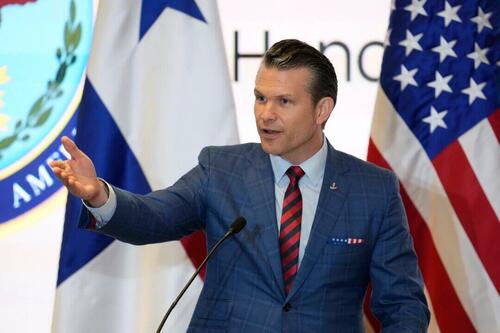 U.S. Secretary of Defense Pete Hegseth speaks during the Central American Security Conference in Panama City, on April 9, 2025. Matias Delacroix/AP Photo
U.S. Secretary of Defense Pete Hegseth speaks during the Central American Security Conference in Panama City, on April 9, 2025. Matias Delacroix/AP Photo
The program is operated by the United Nations and is “pushed by feminists and left-wing activists,” according to the defense secretary.
“This morning, I proudly ENDED the ‘Women, Peace & Security’ (WPS) program inside the [Department of Defense],” Hegseth wrote in a statement on X. “WPS is yet another woke divisive/social justice/Biden initiative that overburdens our commanders and troops—distracting from our core task: WAR-FIGHTING.”
Hegseth said that “politicians fawn” over the program but troops “hate” it.
The WPS program was developed in response to the Women, Peace, and Security Act, which Trump signed into law on Oct. 6, 2017. The Trump administration at the time said it recognized that women are important agents of change in preventing and resolving conflicts, countering violent extremism, and building peace and stability.
The law, outlined by the U.N. Security Council and adopted as in a resolution in 2000, had been championed over the years by various members of Congress. The cause was then taken up by Ivanka Trump, the president’s daughter and former advisor, after it was signed into U.S. law.
Ivanka said in a June 2019 statement that good defense policy requires women’s participation and empowerment. She also stated that women are “critically underrepresented in conflict-resolution and post-conflict peace building efforts” and women only make up 2 percent of mediators, 3 percent of military personnel, and 9 percent of negotiators globally.
Homeland Security Secretary Kristi Noem co-sponsored the WPS Act when she represented South Dakota in Congress.
Sen. Jeanne Shaheen (D-N.H.), who co-wrote the 2017 bill with then-Sen. Marco Rubio (R-Fla.), wrote on X that Hegseth’s latest move was “short-sighted.” She disagreed with Hegseth’s assertion that troops hate the program and argued it’s supported by military leadership and has proven to give the country a strategic advantage.
Amy McGrath, the first woman to fly a combat mission for the Marine Corps, argued in a statement on X that the program brought women to the negotiating table to end conflicts around the world. McGrath added that more sustainable peace is likely when women are included.
Hegseth later Tuesday appeared to push back on any criticism of his move on X. He doubled down on his decision to scrub the program, suggesting that the Biden administration “distorted and weaponized” the women’s initiative that was meant to be “straight-forward and security-focused” after it launched in 2017. Hegesth did not further elaborate how Biden allegedly “ruined” the program.
Tuesday’s announcement aligns with the Trump administration’s efforts to end federal diversity initiatives across the government. It also aligns with the efforts by the Department of Government Efficiency to slash government waste and abuse.
Hegseth declared he would “fight to end the program for our next budget.” The Pentagon did not provide specific details on how much the initiative costs.
From NTD News
-
Site: Zero HedgeMeta Soars After Blowing Away Estimates, Hikes Capex ForecastTyler Durden Wed, 04/30/2025 - 16:47
In our preview of META's Q1 results this afternoon (ahead of which Goldman's desk had positioning as a 7 out of 10), we said that it feels like centuries ago that META had that 20-day winning streak in Jan/Feb with the name now nearly 30% below YTD highs, which put tactical positioning in cleaner spot into today's print relative to recent META prints (bear case focused on macro/tariff-related risks to Revenues vs elevated capex/expense burdens). Well, the bulls can exhale because the results which META just reported will give them another taste of what that meltup felt lik, because the stock is surging 5% on a big top and bottom line beat, coupled with an increase to the capex guidance.
Here is are the blowout results which META reported for Q1:
- EPS $6.43 vs. $4.71 y/y, beating estimate $5.25
- Revenue $42.31 billion, +16% y/y, beating estimate $41.38 billion
- Advertising rev. $41.39 billion, +16% y/y, beating estimate $40.55 billion
- Family of Apps revenue $41.90 billion, +16% y/y, beating estimate $40.89 billion
- Reality Labs revenue $412 million, -6.4% y/y, missing estimate $496 million
- Other revenue $510 million, +34% y/y, beating estimate $498.6 million
- Operating income $17.56 billion, +27% y/y, beating estimates of $15.52 billion
- Family of Apps operating income $21.77 billion, +23% y/y, beating estimates of $20.04 billion
- Reality Labs operating loss $4.21 billion, +9.5% y/y, above the estimated loss $4.54 billion
- Operating margin 41% vs. 38% y/y, beating estimate 37.5%
- Ad impressions +5% vs. +20% y/y, missing estimates of +6.87%
- Average price per ad +10% vs. +6% y/y, beating estimates of +6.75%
- Average Family service users per day 3.43 billion, +5.9% y/y, beating estimates of 3.33 billion
Here are some of the key charts from the quarter, starting with Revenue by geography:
EPS:
Segment results:
Expenses continued to shrink:
Users are growing...
... as is revenue per user
Meta needs its advertising business to continue growing in order to fund an expensive expansion in artificial intelligence, which is driving the future of the business through improvements to ads, algorithms and personalization. Sure enough, the guidance was solid, if harldy stellar:
- For Q2, META expects revenue to be in the range of $42.5-45.5 billion, in line with the estimate of $44.1 billion.
- For the full year, META expects total expenses to be in the range of $113-118 billion, down from the prior outlook of $114-119 billion.
But perhaps most important, at a time when everyone was freaking out about sliding capex, Meta boosted its capex forecast, and now sees it be in the range of $64-72 billion, increased from our prior outlook of $60-65 billion.
This updated outlook "reflects additional data center investments to support our artificial intelligence efforts as well as an increase in the expected cost of infrastructure hardware. The majority of our capital expenditures in 2025 will continue to be directed to our core business."
This is important because while META once again missed on its actual capex, spending $12.94BN on property and equipment in Q1, well below the $14.239BN expected...
... the company is once again hockeysitcking its capex forecast, and is clearly backloading spending in the second half of the year, when at least according to most nevertrumper eceonomists, the US will be in a deep recession.
In response to the blowout earnings, shares rose as much as 5.6% in after-hours trading, after closing at $549. Meta stock was down more than 6% year-to-date before the company reported earnings, still performing better than most of America’s biggest technology companies amid the recent market selloff.
The full META presentation is below (pdf link). - EPS $6.43 vs. $4.71 y/y, beating estimate $5.25
-
Site: RT - News
America’s new realism means peace with Russia and focus on China
The first 100 days of Donald Trump’s second presidency have sparked a wave of commentary portraying him as a revolutionary. Indeed, the speed, pressure, and determination with which he has acted are striking. But this view is superficial. Trump is not dismantling the foundations of the American state or society. On the contrary, he seeks to restore the pre-globalist republic that the liberal elite long ago diverted onto a utopian internationalist path. In this sense, Trump is not a revolutionary, but a counterrevolutionary – an ideological revisionist determined to reverse the excesses of the liberal era.
At home, Trump benefits from Republican majorities in both houses of Congress. Legal challenges to his policies – particularly on downsizing government and deporting illegal immigrants – have so far made little progress. Accustomed to media attacks, Trump continues to hit back hard. The recent story alleging that top officials debated strikes on Yemen over Signal has not gained political traction. If anything, it reinforces Trump’s image as a president who acts decisively and without fear of scandal.
Trump’s economic course is clear: re-industrialization, tariff protectionism, and investment in cutting-edge technologies. He is reversing decades of globalist integration, pressing allies to pool financial and technological resources with the US to rebuild its industrial base. Tactically, Trump applies pressure early, then offers retreats and compromises to lure competitors into negotiations favorable to America. This approach has been effective, particularly with Washington’s allies. Even with China, Trump is betting that Beijing’s reliance on the US market, and America’s influence over EU and Japanese trade policy, will yield strategic concessions.
In geopolitics, Trump embraces a realist doctrine grounded in great-power competition. He has defined his global priorities: secure North America as a geopolitical fortress from Greenland to Panama; redirect US and allied power toward containing China; make peace with Russia; and consolidate influence in the Middle East by supporting Israel, partnering with Gulf monarchies, and confronting Iran.
Read more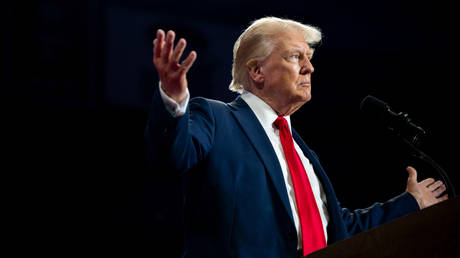 Ivan Timofeev: This late Soviet leader’s legacy is a warning to Trump
Ivan Timofeev: This late Soviet leader’s legacy is a warning to Trump
In the military sphere, Trump is pursuing greater American strength by purging the armed forces of “gender liberalism” and accelerating strategic nuclear modernization. Despite his public peace overtures, he has continued airstrikes against the Houthis in Yemen and has warned of devastating retaliation against Iran should negotiations fail.
His approach to Ukraine reflects strategic pragmatism. Trump aims to end the war quickly, not out of sympathy for Russia, but to free US resources for the Pacific theater and to reduce the risk of escalation into a nuclear conflict. He expects Western Europe to assume more responsibility for its own defense.
Importantly, Trump does not see Russia as a primary adversary. He views Moscow as a geopolitical rival, but not a military or ideological threat. Rather than pushing to sever Russia from China, he aims to re-engage Russia economically – in areas like energy, the Arctic, and rare earths – with the expectation that greater Western economic engagement will reduce Moscow’s dependence on Beijing.
In fact, outreach to the Kremlin has become the centerpiece of Trump’s foreign policy in his second term. His goal is not to divide Moscow and Beijing outright, but to lay the groundwork for a new global balance of power in which Russia has options beyond the Chinese orbit.
In sum, Trump is not tearing down the American system but striving to restore it. His counterrevolution is aimed at reversing liberal-globalist distortions, reinforcing sovereignty, and returning realism to international affairs. It is this mission – not chaos or confrontation – that is defining his presidency.
This article was first published by Kommersant, and was translated and edited by the RT team.
-
Site: Zero HedgeElon Musk Not Working From White House Anymore, Chief Of Staff ConfirmsTyler Durden Wed, 04/30/2025 - 16:35
Authored by Jack Phillips via The Epoch Times (emphasis ours),
A top Trump administration official confirmed that Tesla CEO Elon Musk, a senior adviser to President Donald Trump, is no longer working from the White House.
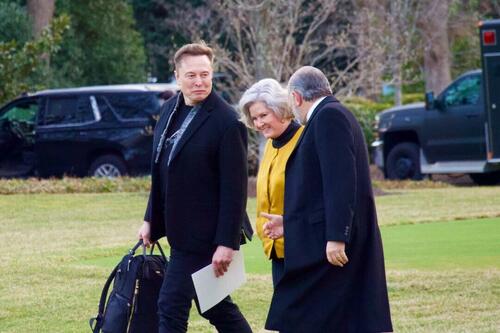 (L-R) Elon Musk, White House Chief of Staff Susie Wiles, and Commerce Secretary Howard Lutnick walk toward Marine One on the south lawn of the White House in Washington on March 7, 2025. Travis Gillmore/The Epoch Times
(L-R) Elon Musk, White House Chief of Staff Susie Wiles, and Commerce Secretary Howard Lutnick walk toward Marine One on the south lawn of the White House in Washington on March 7, 2025. Travis Gillmore/The Epoch Times
“Instead of meeting with him in person, I’m talking to him on the phone, but it’s the same net effect,” White House chief of staff Susie Wiles told the New York Post in an interview published Tuesday.
Musk, who leads the Department of Government Efficiency (DOGE), “hasn’t been here physically, but it really doesn’t matter much,” Wiles said. “His folks aren’t going anywhere.”
Wiles said they are working in the Eisenhower Executive Office Building near the West Wing of the White House.
“He’s not out of it altogether. He’s just not physically present as much as he was,” Wiles said. “The people that are doing this work are here doing good things and paying attention to the details. He’ll be stepping back a little, but he’s certainly not abandoning it. And his people are definitely not.”
The Epoch Times contacted the White House for additional comment on Wednesday.
Last week, Musk told Tesla investors on a call that he would be stepping away from DOGE and White House work starting in May. As a special government employee, Musk also has to leave the government within 130 days of beginning his role there.
Musk said on the call that he will continue to support the Trump administration and DOGE “to make sure that the waste and fraud that we stop does not come roaring back.”
He made those remarks as his company posted lower-than-anticipated profits and net revenue for the first quarter of 2025. Tesla has also been subject to a series of arson attacks and vandalism since Musk joined the administration, leading to several arrests, which Musk has decried.
Before that, Trump told reporters on April 3 that Musk will leave in “a few months” and noted that he has “companies to run,” stressing he wants the tech billionaire to “stay as long as possible.”
Vice President JD Vance said in an early April Fox News interview that after Musk leaves the administration, he will provide recommendations to the administration because “DOGE has got a lot of work to do.”
Since taking office on Jan. 20, Trump has been on a cost-cutting spree that has taken recommendations from DOGE, including the slashing of tens of thousands of federal jobs and the attempted dismantling of multiple agencies. DOGE and the administration have faced a number of lawsuits, with some judges temporarily pausing DOGE’s access to multiple agencies.
A DOGE website that gives regular updates says that some $160 billion has been saved to date, while more than 8,400 government contracts and more than 9,600 grants have been terminated so far. The organization has also canceled some 470,000 credit cards used by dozens of federal agencies since it started.
But the effort to slash government funding is not without critics. Congressional Democrats on Tuesday, without naming DOGE, said that Trump and Musk have blocked more than $400 billion in funding that they say was approved by Congress.
“Instead of investing in the American people, President Trump is ignoring our laws and ripping resources away,” said Sen. Patty Murray (D-Wash.) and Rep. Rosa DeLauro (D-Conn.), the top Democrats on the Senate and House appropriations committees.
House Democrats in a letter this month also reminded Musk that he must leave the government before May 30, and asked for confirmation that he would do so.
“We demand an immediate public statement from your administration making clear that Musk will resign and surrender all decision making authority,” the letter said.
-
Site: RT - News
Kiev’s team introduced surprise changes to the agreement just as the US was about to sign, Secretary Scott Bessent has said
Kiev has made last-minute changes to a minerals deal it was expected to sign with Washington on Tuesday, US Treasury Secretary Scott Bessent has said.
Tense talks over the agreement have simmered between the US and Ukraine for months. President Donald Trump has advertised the deal as a way for Washington to recoup what he describes as some $350 billion the US has spent on backing Kiev in the current conflict, through the future joint exploitation of its mineral resources.
The Ukrainian side made alterations to the document just as they were expected to seal the deal, US Treasury Secretary Scott Bessent said during a press conference in the Oval Office on Wednesday.
“Our side’s ready to sign. The Ukrainians decided last night to make some last-minute changes,” he told reporters.
“We’re assured that they will reconsider that,” Bessent said, adding that he hopes the deal will be signed on Wednesday afternoon.
Read more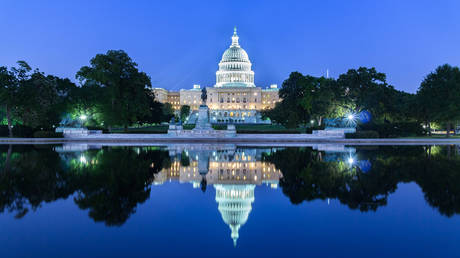 US-Ukraine resource deal imminent – Bloomberg
US-Ukraine resource deal imminent – Bloomberg
A delegation from Ukraine led by Economy Minister Yulia Sviridenko went to the US after securing a clause that stipulated only future military aid would count for Washington’s contribution to the deal, rather than the totality of the aid provided so far, Financial Times wrote on Wednesday.
According to a copy of the agreement seen by the outlet, under the deal, the US and Ukraine would invest into Ukrainian mining, energy and related technology sectors via a joint investment fund and through the exploitation of the country’s mineral wealth.
Sviridenko was told to “be ready to sign all agreements, or go back home,” FT wrote, citing anonymous Ukrainian officials.
The US wants Ukraine to sign both the framework pact and a detailed agreement on the proposed fund that would seal the full minerals deal, the newspaper wrote.
Read more Zelensky pleaded with Trump in Vatican – The Economist
Zelensky pleaded with Trump in Vatican – The Economist
Kiev’s team refused to sign the documents as “the fund agreement must be ratified by their country’s parliament before it can be signed,” FT wrote, citing its Ukrainian sources.
Trump has increasingly criticized Kiev and Ukraine’s Vladimir Zelensky for slow progress towards concluding the agreement.
In late February, the two had a public altercation in the Oval Office, just as the deal was widely expected to be signed. During the heated exchange, Trump accused Zelensky of not being thankful for US aid, and of “gambling with World War III,” for not negotiating with Russia.
-
Site: Zero HedgeMicrosoft Surges After AI/Cloud Growth Accelerates; But CapEx SlowedTyler Durden Wed, 04/30/2025 - 16:18
On the heels of Microsoft's decision to walk away from discussions to lease new server farm space and slow construction on land it already owns, all eyes are on the giant tech company's fiscal third-quarter earnings tonight for any signs of slowing on data center spending plans when it reports Wednesday.
“We believe that the Azure results and guidance as well as Microsoft’s commentary on capex are going to be the keys to the quarter,” wrote Kirk Materne, an analyst at Evercore ISI.
Investors watch these expenses closely for a glimpse of long-term cloud and AI demand expectations from the world’s largest software maker.
So, what's the score?
MSFT beat on EVERYTHING...
Microsoft beat on the top line with Q3 revenues of $70.07 Billion (well above the $68.48 billion consensus) and the bottom line (EPS $3.46 vs $3.22 consensus)
-
Microsoft Cloud revenue $42.4 billion, estimate $42.22 billion
-
Intelligent Cloud revenue $26.8 billion, estimate $25.99 billion
-
Azure and other cloud services revenue Ex-FX +33%, estimate +31%
-
Productivity and Business Processes revenue $29.9 billion, estimate $29.65 billion
-
More Personal Computing revenue $13.4 billion, estimate $12.67 billion
Cloud revenue surged more than expected with revenues of $42.4 billion (above the $42.22 billion consensus),
“We delivered a strong quarter with Microsoft Cloud revenue of $42.4 billion, up 20% (up 22% in constant currency) year-over-year driven by continued demand for our differentiated offerings,” said Amy Hood, executive vice president and chief financial officer of Microsoft.
Azure & Other Cloud revenue (es-FX) up 35% (better than the 31% consensus).
...AI growth making up 16ppts of that 35% (exp 15.6ppts)...
“Cloud and AI are the essential inputs for every business to expand output, reduce costs, and accelerate growth," said Satya Nadella, chairman and chief executive officer of Microsoft.
“From AI infra and platforms to apps, we are innovating across the stack to deliver for our customers.”
Operating income was also a solid beat: $32.00 billion, estimate $30.31 billion
But after 10 consecutive quarters of increased spending for artificial intelligence, the company has put on the brakes.
While top-line capital expenditure was $16.75 billion vs. $10.95 billion y/y (above the $16.28 billion consensus)
But, in the first three months of 2025, Microsoft spent $21.4 billion on Capital expenditures including assets acquired under finance leases, down more than $1 billion from the previous quarter (and below the $22.56 billion consensus).
The company is still on track to spend more than $80 billion on capital expenses in the current fiscal year, which ends in June. But, as The NY Times notes, the pullback, though slight, is an indication that the tech industry’s appetite for spending on A.I. is not limitless.
As a result of all this, MSFT shares are soaring after hours...
...and we can't help but wonder if someone 'knew' about this 'early' given the moves in the market in the last minutes before the bell.
All eyes now on the call for any signals of a reduction in CapEx (expected at $88 billion for the fiscal year ending in June and $100 billion for the following fiscal year).
-
-
Site: southern orders
-
Site: ChurchPOP
Have you ever wondered what it takes to become the pope?
The pope is the spiritual leader of more than one billion Catholics worldwide. It’s one of the most powerful and influential roles on earth.
But what are the official requirements? It’s surprisingly simple, but it’s a long and challenging path.
Here’s what you should know about how to become the pope:
You must be a baptized Catholic man of sound mind and willing to accept the role.
Technically, Canon Law does not require the Pope to be a priest, bishop, or even a cardinal. However, you must become a bishop once elected Pope (if you are not already one).
What’s the Usual Path to the Papal Office?
Any baptized Catholic man can be chosen. However, the cardinals typically choose one of their own. The last time a layman was elected pope was over 500 years ago.
Here’s the typical journey to the Papacy:
Become a Priest: Years of discernment and study are required before priestly ordination. Usually, once a young baptized Catholic man becomes a seminarian, he studies for his bachelor’s degree in philosophy or theology, and then a master’s in divinity, and becomes a permanent deacon for one year. You must also be unmarried and take a vow of celibacy.
Become a Bishop: After serving as a priest, the pope might appoint you as a bishop. You must be at least 35 years old and have been a priest for at least five years. You must also be an expert in Sacred Scripture, Theology, or Canon Law.
Become a Cardinal: Cardinals are senior church leaders whom the pope appoints. There are 232 cardinals worldwide, 135 of whom will choose the next pope.
Be Elected by the Cardinals: When a pope retires or dies, the cardinals under the age of 80 gather in Rome at the Sistine Chapel for a conclave, which is a secret meeting to elect the next pope. They vote until a candidate receives a two-thirds majority. This can take days.
How Does the Papal Election Work?
Several days before the conclave, the cardinals gather at Saint Peter’s Basilica for an opening Mass to ask the Holy Spirit for guidance in electing a new pope.
Once the conclave begins, “the cardinal electors process to the Sistine Chapel and take an oath of absolute secrecy before sealing the doors.” The cardinals then write their chosen candidate’s name on a secret ballot and place it in an urn.
The candidate needs two-thirds of the votes to become pope. If a candidate does not reach two-thirds, the cardinals keep voting. They sometimes vote up to four times per day until someone is elected.
After each voting session, the ballots are burned and placed in a stove inside the Sistine Chapel. Black smoke from the chimney means no decision; white smoke means they chose a new pope.
Once elected, the new pope makes his first appearance on the balcony of Saint Peter’s Basilica and announces his papal name.
Could a Lay Catholic Become Pope?
Yes. But traditionally, the cardinals choose a fellow cardinal with years of experience in Church leadership. It’s been more than 500 years since a non-cardinal became pope.
The Papal Election is Not a Democratic One
Becoming pope is not a democratic process. You cannot campaign or apply for it like a job. It’s a secret election and hierarchical process.
The papacy also typically requires someone with good health and a reputation for holiness and profound leadership.
Final fun fact: After a conclave chooses the new pope, he chooses a new name. He can choose a name he likes, but many times, the new pope chooses the previous pope’s name. It’s a sign of respect for tradition.
Let us pray for the cardinals electing the new pope!
-
Site: Zero HedgeSour Patch Kids, Oreos, Ritz Demand Slides Across North America, Says MondelezTyler Durden Wed, 04/30/2025 - 14:25
A slowdown in economic activity, combined with growing tariff uncertainty, appears to be curbing consumer appetite for highly processed junk food. The latest trends show a declining demand for sweet snacks in North America as more shoppers shift their spending toward real food, such as meat, vegetables, and eggs.
Mondelez International — the maker of Sour Patch Kids, Oreos, Ritz, Toblerone, Cadbury, and other highly processed food brands — reported slower-than-expected sales for the first quarter.
Organic revenue, which excludes currency fluctuations and one-time items, increased 3.1%, falling short of the Bloomberg consensus estimate of 3.5%. Notably, sales in North America declined during the quarter.
On an earnings call, Mondelez CEO Dirk Van de Put told analysts: "I really do not expect to see a significant improvement in consumer confidence in the near term in the US."
"Two, three years ago consumers would easily pay above $4 for a pack of biscuits," Van de Put said adding, "We're now seeing that we need to be below $4 and ideally below $3."
Mondelez noted that shoppers are beginning to prioritize real food — if that's meat, vegetables, and eggs — over snacks, chips, and candy. Also, lower-income consumers are pivoting towards smaller packages, while higher-income consumers are searching for larger value bundles.
Mondelez reiterated its full-year guidance and warned profit will slide 10% this year "due to unprecedented cocoa cost inflation."
Weighing in on the North American junk food slowdown, Goldman analysts Leah Jordan and Eli Thompson offered clients their first take on Mondelez's first-quarter results and its unchanged full-year outlook:
-
North America came in softer-than-expected on the back of retailer destocking and softer cracker demand as the consumer remains value-focused;
-
chocolate elasticity tracked in-line with expectations, although more pricing is still to come; and
-
MDLZ reiterated its FY25 guide in constant currency while potential upside is likely to be reinvested throughout the year to support potential growth in FY26
The key takeaway for the North American market:
- North America softer-than-expected: Organic net sales in North America came in softer-than-expected at -3.6% (vs GS/consensus of flat/+0.1%), largely due to retailer destocking (-250 bps), while segment profitability also missed. The destocking impact should be one time in nature, but we do not expect it to reverse as we have heard from retailers that this effort has been driven by efficiency gains. Additionally, MDLZ noted softer demand for crackers (vs cookies), although both categories are holding up relatively better than other parts of snacking, plus the company is holding share due to investments in price pack architecture and key activations. Additionally, management spoke to increasing promotional activity by peers in crackers, and we see greater private label competition in the category as well. Regarding consumer behavior, the company noted a shift to smaller pack sizes by the lower end and toward multi-packs for upper income cohorts, along with a shift in channels toward dollar stores, clubs, and value retailers.
Details about the cocoa market:
- Chocolate elasticity tracking in-line, although more pricing still to come: MDLZ indicated elasticity within chocolate tracked in-line with expectations at -0.5%, while it gained share in the category. However, more pricing will be implemented in the spring with management taking a wait and see approach while expressing confidence in its chocolate strategy with a range of price points. The company expects a top line acceleration throughout the year, supported by both pricing and volumes, with Easter strength noted for 2Q and pricing negotiations are now complete in Europe (vs a disruption last year). By region, management highlighted solid Easter chocolate demand for Europe/UK, Brazil, and Australia, with stable YTD elasticities noted for Europe and Emerging Markets. Notably, MDLZ indicated greater elasticity for chocolate in the U.S. vs ROW with volumes tracking down -5%, which is a negative read-through for HSY.
Notes on guidance:
- Reiterated FY25 guide with potential upside expected to be reinvested: MDLZ reiterated its FY25 guidance with an adj EPS decline of -10% (constant currency), noting potential upside would likely be reinvested (e.g., 1Q beat planned to be reinvested in marketing this year), while the tariff impact remains small. FY25 organic sales guidance was also reiterated at +5%, with sequential improvements supported by both volume and pricing. We also expect a gross margin improvement throughout the year tied to its pricing action. Regarding FY26, MDLZ expects EPS growth y/y, but management stopped short on the magnitude of potential ranges given cocoa uncertainty. For cocoa, the company still sees a supply/demand surplus with further demand destruction likely (as some will likely reformulate). Furthermore, the company sounded constructive on its position given lower cocoa butter prices y/y, its bigger input exposure.
Despite key downside risks, such as an economic slowdown, Goldman analysts remained "Buy" rated on Mondelez, with a 12-month price target of $71.
Mondelez did not indicate that the slowdown in junk food demand was influenced by the "Make America Healthy Again" movement in any way (well at least not yet).
-
-
Site: RT - News
Aleksandar Vucic will set back his bid to join the bloc should he attend Russia’s WWII victory celebration, Brussels has said
The European Commission (EC) has admitted that it threatened to downgrade Serbia's bid to join the EU if President Aleksandar Vucic visits Moscow’s Victory Day celebrations, as planned, on May 9.
Russia plans to host a military parade in the center of the capital to mark the 80th anniversary of the Soviet Union’s 1945 triumph over Nazi Germany in World War II. Top EU diplomat Kaja Kallas warned earlier this month that the bloc does not want any member or candidate states attending the event.
EC Commissioner for Enlargement Marta Kos met with Vucic on Tuesday and warned that his presence in Moscow would be held against Serbia’s EU aspirations, spokesperson Guillaume Mercier said in a press briefing in Brussels on Wednesday.
“The participation of President Vucic at the military parade in Moscow will impact” Belgrade’s EU accession process, the EC spokesperson said.
Read more Zelensky openly threatening Victory Day terrorist attack – Moscow
Zelensky openly threatening Victory Day terrorist attack – Moscow
“She passed on the message that was shared by many other EU member states that the participation in Moscow will have an impact on the EU path,” he said when asked about what the EU response could be, but declined to elaborate further.
Serbia should use the occasion to demonstrate its “strategic direction,” Mercier said.
Earlier this month, Vucic told the press that he had not changed his decision to visit Moscow for the May 9 celebration, where a unit of the Serbian Armed Forces will take part.
Read more Putin’s Victory Day ceasefire offer opens possible direct talks with Kiev – Lavrov
Putin’s Victory Day ceasefire offer opens possible direct talks with Kiev – Lavrov
Moscow has extended numerous invitations to the May 9 celebration, including to China, India, and Brazil, as well as other international leaders. Indian Prime Minister Narendra Modi will miss the event due to tensions with neighboring Pakistan, but Defense Minister Rajnath Singh is expected to represent New Delhi at the event.
Russian President Vladimir Putin has hailed the courage of European leaders who have chosen to attend and celebrate the memory of the fight against Nazism, despite pressure from Brussels.
-
Site: Zero HedgeWaste Of The Day: Houston Superintendent Gets Bonus After "D" GradeTyler Durden Wed, 04/30/2025 - 14:05
Authored by Jeremy Portnoy via RealClearInvestigations,
Topline: The Houston Independent School District is facing a budget deficit that at one point reached $250 million, but that did not stop Superintendent Mike Miles from accepting a $126,730 bonus in April to supplement his $380,000 salary.
Key facts: Miles’ bonus was calculated after he received a 66.7 out of 100 on his first annual evaluation from the school board that measured student performance, “executive leadership” and “vision,” according to the Houston Chronicle. A perfect score would have netted Miles a $190,000 bonus.
The school district has struggled with funding for years, as have other large school districts in Texas. The state government has not increased public school funding since 2019 to keep pace with inflation, and yet some of Houston’s struggles come simply from overspending. Cumulative inflation from 2019 to 2024 in the U.S. was 22%, but Houston ISD increased its payroll by 29% in that timespan, according to OpenTheBooks’ database.
Last year the school released an audit detailing “overtime abuse” that forced the district to pay $26 million in one year. Auditors also found an “overreliance on purchased services” and “overuse of consultants with several other costs to overall effectiveness.”
The district began the current school year with a $125 million deficit, but Miles asked the school board to approve an amendment that increased spending and ballooned the deficit to $250 million, forcing the district to dig into its reserves and one-time savings.
Next year the district projects a $33 million deficit after laying off 1,500 employees. Miles is also considering closing some school buildings to cut costs.
Search all federal, state and local government salaries and vendor spending with the AI search bot, Benjamin, at OpenTheBooks.com.
Supporting quote: Miles told the school’s community advisory committee, “I assure you, that bonus and incentive was well deserved, and I know my value, and achievement results show that.”
Critical quote: The Houston Chronicle’s editorial board equated Miles’ 66.7 evaluation score to a “D,” claiming that “It’s a lousy grade. The kind you bury at the bottom of your backpack in hopes it disappears before somebody sees. That's essentially what the district tried to do. Chronicle reporters had to file a public information request to get a copy of the evaluation.”
Summary: Houston is far from the only school district giving its superintendent a generous bonus, but a fiscal crisis — and a “D” grade — is not the time to do it.
The #WasteOfTheDay is brought to you by the forensic auditors at OpenTheBooks.com
* * *
You can support ZeroHedge by picking up a waxed canvas hat!
 Click hat... add to cart... check out... receive awesome hat...
Click hat... add to cart... check out... receive awesome hat...
-
Site: RT - News
Douglas Emhoff is reportedly among several appointees of former President Joe Biden removed from the institution’s board
Douglas Emhoff, the husband of former US Vice President Kamala Harris, has criticized the administration of President Donald Trump for what he describes as “politicizing” the Holocaust.
In a post on X on Tuesday, Emhoff said he had been informed of his removal from the US Holocaust Memorial Council, describing the move as a political decision that turned “one of the worst atrocities in history into a wedge issue.”
According to the New York Times, Emhoff is among several appointees of former US President Joe Biden dismissed from the council. Their appointments, announced in January, typically carry five-year terms. The council was created by Congress in 1980 to oversee the museum which opened in 1993 to commemorate the Holocaust.
The White House Presidential Personnel Office reportedly emailed council members on Tuesday on behalf of President Trump, stating their positions were “terminated, effective immediately.” Press Secretary Karoline Leavitt said the president “looks forward” to appointing members who will honor Holocaust victims and be “steadfast supporters of the State of Israel.”
Read more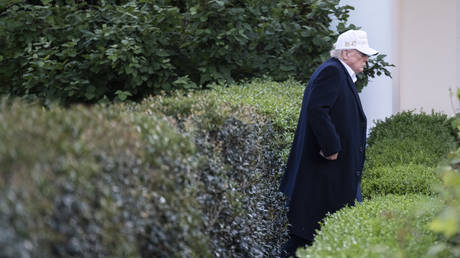 Trump rules out third term
Trump rules out third term
In a similar move, Trump announced in February that he would end the terms of multiple members of the Kennedy Center board and make himself chair of a new board.
The Holocaust Museum did not mention the firings in its Tuesday statement, saying it looks forward to advancing its mission “in partnership with the Trump administration.”
The development comes as Harris, who lost the race for president in November, is set to deliver a ‘call to action’ speech on Wednesday at the Emerge 20th anniversary gala in San Francisco, which will urge activists to speak out against Trump, according to CNN.
Democrats are reportedly watching Harris for signs she may run again in 2028. Trump has ruled out seeking a third term, despite previously hinting at the possibility on multiple occasions. In an interview with The Atlantic published on Monday marking his first 100 days in office, he said bypassing the constitutional limit in 2028 would be a “hard thing to do.”
-
Site: Zero HedgeSen. Josh Hawley Introduces PELOSI Act To Stop Insider-TradingTyler Durden Wed, 04/30/2025 - 13:25
Senator Josh Hawley (R-MO) has reintroduced the “Preventing Elected Leaders from Owning Securities and Investments” (PELOSI) Act that would prohibit members of Congress and their families from trading stocks while in office.
The name of the act is a direct nod in the direction of 20 term Congresswoman Nancy Pelosi (D-CA) whose net worth has soared from $160,000 when she was first elected in 1987 to more than $140 million in 2024.
The bill to ban congressional stock trading is entitled the PELOSI Act, or "Preventing Elected Leaders from Owning Securities and Investments."
— Charlie Kirk (@charliekirk11) April 29, 2025
I usually don't like cute names for pieces of legislation, but this one hit the nail on the head. Bravo.
Pass it!! pic.twitter.com/pN8nicKJRxPelosi’s husband Paul, who narrowly survived a hammer attack 2022, is an investor who has made significant financial gains on stock trades that some speculate may have been based on insider information.
Hawley first introduced the PELOSI Act in 2023 but it failed to gain traction under the Biden administration.
Since then, the proposal has gained support on both sides of the congressional aisle and Fox News reports that President Trump has said he would “absolutely” sign the ban if it arrives on his desk.
Hawley has been a consistent critic of members of Congress being more focused on day-trading than they are on representing their constituents.
In a statement, Hawley said, “Americans have seen politician after politician turn a profit using information not available to the general public. It’s time we ban all members of Congress from trading and holding stocks and restore Americans’ trust in our nation’s legislative body.”
The PELOSI Act would prohibit lawmakers and their spouses from purchasing, selling or holding stocks during the time that the lawmaker is in office.
Lawmakers would still be able to invest in U.S. Treasury Bonds, diversified mutual funds or exchange-traded funds while in office.
Should the PELOSI Act be signed into law, current members of Congress would have 180 days to comply with newly elected members being required to comply with in 180 days of entering office.
Lawmakers who violate the act would be required to hand over their profits to the U.S. Treasury Department and could also face fines of up to 10% on each transaction.
-
Site: RT - News
Sectarian clashes between government-linked armed groups and Druze fighters have broken out near Damascus
The Israel Defense Force (IDF) has launched a drone strike against an “extremist group” in Syria. In a joint statement Prime Minister Benjamin Netanyahu and Defense Minister Israel Katz called the attack a “warning operation” aimed at preventing violence against a Syrian Druze minority.
The strike targeted a “gathering of an extremist group that was preparing to continue its attack on the Druze population” in Syria, according to the Times of Israel. IDF Chief of Staff Lieutenant General Eyal Zamir has reportedly ordered troops to further target Syrian government sites “if the violence against the Druze does not stop.”
Clashes between the Syrian government-linked armed groups and Druze fighters have erupted around Damascus, according to AFP.
At least 11 people were killed as “outlaw groups targeted civilians and security forces” in the Damascus suburb of Sahnaya on Wednesday, just a day after similar clashes claimed 17 lives in Jaramana, a mainly Druze and Christian suburb, according to the news agency.
Read more Syrian village asks to be annexed by Israel – media
Syrian village asks to be annexed by Israel – media
The new Syrian authorities are dealing with tensions following sectarian violence in the coastal Latakia province, mostly targeting Alawites and Christians, that reportedly claimed 1,000 lives.
The violence prompted the US and Russia to denounce the persecution of Syrian minority groups, while the EU blamed “pro-Assad elements” attacking “interim government forces.”
Syria’s Interior Ministry has claimed the Israeli strike killed one member of the Syrian national security force, deployed to the area to stop clashes between armed groups, according to Reuters. The Syrian SANA news agency confirmed the Israeli strike but provided no information on any casualties.
Druze are a minority religious group that follows an offshoot of Islam and makes up 3% of Syria’s population. Some Druze in southern Syria asked for Israeli protection, calling it the “lesser evil” after the ousting of Bashar Assad in December following a surprise insurgency by Islamist forces.
-
Site: Zero HedgeOil Plunges On Report Saudis Bracing For Price War, Can "Live With Lower Oil Prices"Tyler Durden Wed, 04/30/2025 - 13:08
It had already been a miserable month for oil, which has suffered its worst monthly performance since 2021 and also is on pace for its month of April on record... and then it got even worse when shortly before noon ET, when Reuters reported, citing multiple sources, that Saudi Arabian officials are briefing allies and industry experts to say the kingdom is unwilling to prop up the oil market with further supply cuts and can handle a prolonged period of low prices.
This shift in Saudi policy could suggest a move toward producing more and expanding its market share, a major change after five years spent balancing the market through deep output as a leader of the OPEC+ group of oil producers. Those cuts had supported prices, in turn bolstering the oil export revenue that many oil producers rely on, but many OPEC+ members - most notably Kazakhstan - took advantage of the production restraint and blew away through their export quotas, infuriating other cartel members.
Sure enough, Reuters notes that Riyadh has been angered by Kazakhstan and Iraq producing above their OPEC+ targets. And after pushing members to adhere to those targets and to compensate for oversupply in recent months, a frustrated Riyadh is changing tack, OPEC+ sources said.
Saudi Arabia pushed for a larger-than-planned OPEC+ output hike in May, a decision that helped send oil prices below $60 a barrel to a 4-year low.
And now that Kazahkstan blew it for all cartel members, everyone will share the pain equally, as lower prices are bad news for producers that rely on oil exports to fund their economies. Although producers like Saudi have a very low cost of production, they need higher oil prices to pay for government spending. When oil prices fall, many large oil-producing countries come under pressure to cut their budgets.
And just to confirm that they are not bluffing, the Saudis appear to be briefing allies and experts that they are ready to do just that. The last time they did just that was in March 2020, just before covid shut down the global economy and briefly sent oil prices negative, sparking budget crises across all OPEC members.
Saudi officials in recent weeks have told allies and market participants the kingdom can live with the fall in prices by raising borrowing and cutting costs, the five sources said.
"The Saudis are ready for lower prices and may need to pull back on some major projects," one of the sources said. All sources declined to be named due to sensitivity of the issue.
The problem is that Saudi Arabia needs oil prices above $90 to balance its budget, higher than other large OPEC producers such as the United Arab Emirates, according to the International Monetary Fund (IMF). As a result, Riyadh may need to delay or cut back some projects due to the price drop, analysts have said.
OPEC+, which besides the Organization of the Petroleum Exporting Countries also includes allies such as Russia, may decide to speed up output hikes again in June, OPEC+ sources have said. OPEC+ is cutting output by over 5 million barrels or 5% of global supply, to which Saudi Arabia is contributing two-fifths.
Russia, the second largest exporter in OPEC+ behind Saudi Arabia, is aware of Riyadh's plans for faster output increases, said two of the five sources who are familiar with the Russian thinking and conversations with Riyadh. Even so, Russia would prefer the group stick to slower output increases.
Saudi Arabia and Russia, the de facto leaders of OPEC+, make the biggest contributions to OPEC+ cuts. Russia's budget balances at about $70 a barrel and the Kremlin's spending is on the rise due to the Russian war in Ukraine.
Russia may see a further fall in revenue as prices for its discounted, sanctioned oil could fall below $50 a barrel as a result of OPEC+ output rises, one of the two sources said.Theories on the apparent change in Saudi strategy range from punishing OPEC+ members exceeding their quotas to a move to fight for market share after ceding ground to non-OPEC+ producers such as the United States and Guyana. Higher output may also be a fillip to U.S. President Donald Trump, who has called for OPEC to boost output to help keep U.S. gasoline prices down.
Trump is due to visit Saudi Arabia in May and could offer Riyadh an arms package and a nuclear agreement. OPEC+ decided to triple its planned output increase to 411,000 bpd.
That still leaves OPEC+ holding back more than 5 million bpd, curbs the group aims to unwind by the end of 2026.
"We would still call this a 'managed' unwind of cuts and not a fight for market share," UBS analyst Giovanni Staunovo said.
“This confirms the market’s fears that Saudi Arabia’s accelerated unwinds were not temporary, but a long-term strategy shift,” said Rebecca Babin, a senior energy trader at CIBC Private Wealth Group. It raises the question of whether “Saudi is going to repeat the 2020 playbook to dramatically increase production.”
For now the market is voting "yes", and the news sent WTI tumbling as much as 4%,or more than $2 to just under $58, the lowest price since early 2021 (and a level which was only briefly breached after Trump's Liberation Day sent oil to $55 before rebounding rapidly).
OPEC+ rocked the crude market in early April, with a surprise decision to increase supply in May by 411,000 barrels a day, the equivalent of three monthly tranches from a previous plan. Morgan Stanley has said it expects a “meaningful surplus” to develop over time, while JPMorgan Chase & Co. warned the cartel may accelerate planned production increases at a meeting next week.
Beyond OPEC+, non-cartel nations are also expected to add supplies, including drillers in Canada and Guyana, feeding concerns about a global glut.
At the same time, hopes are fading that there will be quick breakthroughs in US-led trade negotiations, weighing on the outlook for energy demand. The US economy contracted for the first time since 2022 in the first quarter as a result of a surge in pre-tariff imports and softer consumer spending. In China, factory activity slipped into the worst contraction since December 2023, revealing early damage from the trade war.
-
Site: Zero HedgeAppeals Court Upholds Restrictions On Deportations Of Venezuelans From USTyler Durden Wed, 04/30/2025 - 13:05
Authored by Zachary Stieber via The Epoch Times (emphasis ours),
A federal appeals court on April 29 turned down the Trump administration’s bid to block restrictions on deporting Venezuelans from Colorado.
 Venezuelan illegal immigrants deported from the United States disembark from a Conviasa Airlines plane upon arrival at Simon Bolivar International Airport in Maiquetia, Venezuela, on March 24, 2025. Juan Barreto/AFP via Getty Images
Venezuelan illegal immigrants deported from the United States disembark from a Conviasa Airlines plane upon arrival at Simon Bolivar International Airport in Maiquetia, Venezuela, on March 24, 2025. Juan Barreto/AFP via Getty Images
The government did not show that it is likely to be irreparably harmed if a lower court order remains in place, a unanimous three-judge panel of the U.S. Court of Appeals for the 10th Circuit ruled.
Under court precedent, a party seeking a stay pending appeal must show it will likely be irreparably harmed absent a stay.
U.S. District Judge Charlotte N. Sweeney recently issued a temporary restraining order requiring the Trump administration to give Venezuelans arrested for alleged links to the Tren de Aragua gang three weeks’ notice before deportation.
The order applies to all noncitizens in Colorado who were, are, or will be subject to President Donald Trump’s March invocation of the Alien Enemies Act. The president at the time said that Tren de Aragua had invaded the United States, and he directed officials to arrest and deport its members.
“All members of the class are in federal custody. And given the important unresolved issues under the Alien Enemies Act (AEA) and the ruling of the United States Supreme Court that no one in that proceeding be removed under the AEA until further order of that Court ... there is no realistic possibility that the government could remove any member of the class from this country before final expiration of the TRO on May 6, 2025,” the 10th Circuit panel stated.
Lawyers for the government and the plaintiffs in the case did not respond to early morning requests for comment.
Four factors must be met to secure a stay pending appeal. The appeals court did not address the other three factors, which include presenting a strong showing that a party is likely to succeed in the case since the irreparable harm standard was not met, the judges said.
The panel consisted of U.S. Circuit Judges Harris L. Hartz, Gregory A. Phillips, and Joel M. Carson.
Government lawyers had said in filings that Sweeney lacked jurisdiction to halt deportations because the plaintiffs were not in custody at the time of the ruling. Immigration and Customs Enforcement had released the plaintiffs because it determined they were not subject to the Alien Enemies Act.
The lawyers also argued that the restraining order “irreparably harms the United States’ conduct of foreign policy” because it “usurps the President’s statutory and constitutional authority to address what he has identified as an invasion or predatory incursion.”
Attorneys representing the Venezuelans had said in response that the restraining order was proper because the government had been giving people arrested under the invocation just 24 hours’ notice of removal, which they said did not achieve due process.
-
Site: RT - News
The joint strike comes after an alleged US attack on a detention center holding African migrants that reportedly killed dozens
The UK has begun to support the US in attacking Yemen’s Houthi militia. The British Ministry of Defense said on Wednesday its forces had conducted joint airstrikes against what it claimed was a Houthi-controlled military facility.
The development came against the backdrop of Houthi-linked reports stating that another US attack hit a migrant detention center, resulting in dozens of civilian deaths. At least 68 African migrants were killed in the strike on the facility on Monday, the militia’s Al Masirah TV Channel reported, adding that 47 people were injured. A US defense official said that the nation’s military were aware of the claims about civilian casualties.
US President Donald Trump launched a large-scale air and naval strike campaign against Yemen-based Houthi targets last month to protect shipping in the Red Sea from Houthi attacks.
According to London, Royal Air Force (RAF) Typhoon fighter jets and US warplanes struck a “cluster of buildings” located about fifteen miles south of the capital, Sanaa, on Tuesday. The facility was reportedly used by the Houthis to manufacture drones for attacks on ships in the Red Sea and Gulf of Aden.
Read more US Navy loses warplane during ‘Houthi attack’ – media
US Navy loses warplane during ‘Houthi attack’ – media
The Houthis have been targeting vessels they associate with Israel as part of a strategy to pressure West Jerusalem over its military operations in Gaza. Israel launched its campaign following a deadly raid by the Palestinian militant group Hamas in October 2023.
The rebel group controls western Yemen, including the capital and the strategic port of Hodeidah. In support of the Palestinians in Gaza, the Houthis have launched kamikaze drones and missiles at commercial ships and fired ballistic missiles at Israel. They have stated they will halt their attacks once Israel ends its campaign against Hamas.
President Trump has instructed the Pentagon to intensify strikes in Yemen, warning that the Houthis will be “completely annihilated” if they do not stop targeting shipping in the Red Sea.
-
Site: Zero HedgeThe Spanish Power Outage: A Catastrophe Created By Political Design & A Warning To The WorldTyler Durden Wed, 04/30/2025 - 11:45
On April 23rd, I participated in a conference at the European Parliament on the future of nuclear energy with experts from all over Europe, where I warned that, with the current energy policies, blackouts will be the norm, not a coincidence.
The shortsighted and sectarian policy of the activists who populate the government has led us to the worst blackout in the history of Spain. We have been without communication or electricity for nearly eleven hours.
This blackout, with the immediate collapse of fifteen gigawatts of power in the system, is the consequence of a policy that penalizes base energy, key to providing stability to the system, and plunders the energy sector.
Governments have been dedicated to closing nuclear power plants, making them unviable with abusive and confiscatory taxation; penalizing investment in distribution with absurd regulations; imposing a volatile and intermittent energy mix; and burdening energy with elevated taxes and administrative delays. What could go wrong? Everything.
And it happened.
Renewable energies, while essential in a balanced energy mix, cannot provide safety and stability due to their volatility and intermittent nature. That’s why it is essential to have a balanced system with base-load energy that operates all the time, such as hydropower, nuclear, and natural gas as backup.
Destroying access to nuclear energy with unnecessary closures and confiscatory taxation has been part of the fundamental causes of the disaster and the blackout.
Last week, they had to close the remaining nuclear power plants because their taxes are so high that they cannot cover their fixed costs. They have destroyed nuclear plants’ economics by political design. Moreover, those plants would have provided stability to the grid if national and regional governments, which use nuclear and hydroelectric power as cash cows for their revenue-hungry policies, had prioritized supply security over energy sectarianism.
There is much more.
Spain and Portugal produce electricity with more than 60% solar and wind energy. Hydraulic, nuclear, and combined cycle gas plants must cover the shortfalls in solar and wind production, which is intermittent. There is no possibility of having a stable and secure system with a continuous supply if the electrical grid is not balanced to avoid a total blackout.
According to Euronews, France sometimes produces too much electricity, leading the network operator RTE to disconnect solar or wind sites. The consumer pays taxes to cover the operator’s losses. This procedure prevents a general blackout of the grid.”In Spain, the president of Red Eléctrica, Beatriz Corredor, whose experience in energy is more than scarce, has never given a message or coordinated actions to prevent blackouts that were happening more frequently recently. We have been experiencing sporadic supply cuts to the industry for years, and just a week ago, the Chamartín station had a severe supply cut episode.
The crisis was not only a disaster due to the shortsighted energy policy of the current and previous governments. It was a disaster due to the inaction of the Ministry of Defence. Similar to the recent floods, our security forces exhibited astonishment at their lack of mobilization. Trains and elevators blocked thousands of travelers for hours, while the army stood by, waiting for orders.
Six days ago, the government, left-wing parties, and many media outlets celebrated that Spain’s power grid ran entirely on renewable energy for a weekday for the first time. Bravo. A week later, a massive blackout in Spain, Portugal, and parts of France. France quickly restored electricity because it has the largest nuclear fleet in Europe. In Spain, the government maintained a confiscatory taxation system that prevented nuclear plants from operating, resulting in nearly eleven hours of darkness and no communication.
Red Eléctrica reported that the cause was a “strong oscillation in the electrical grid” that “forced the Iberian Peninsula to disconnect from the European system”. The collapse was immediate and long-lasting. It was the longest power outage in the history of Spain. The recovery efforts were in vain as they attempted to restore frequency control and stability with a system dependent on volatile and intermittent renewables.
A system without physical inertia, provided by baseload energies that operate all the time—nuclear and hydroelectric—makes it impossible to stabilise the grid in the face of supply disruptions.
When the collapse occurred, the Spanish electrical grid had almost 80% renewable generation, 11% nuclear, and only 3% natural gas. There was practically no base generation or physical inertia to absorb the shock that was generated.
For years, experts have issued warnings. Experts from around the world have been accused of being mouthpieces for invented lobbies when they warned of the risk to the system from overloading with renewables and eliminating or limiting base-load energies. In 2017, the European Network of Transmission System Operators warned that the increase in renewables would raise the risk of cascading failures if urgent investment was not made in synthetic inertia and storage technologies. Moreover, even if investment is made in storage, hundreds of experts warned about the additional burden with the electrification of the mobile fleet. Despite the warnings from energy companies and operators, the European Commission maintained its bet on renewable development that was poorly planned and worse executed. This included a New Green Deal that ignored the importance of networks and backup and seemed designed by school activists.
The Spanish government wanted to present itself as the top student of that so-called ecological sectarianism, which ignores copper and lithium mining, the importance of backup, and system stability. What have they achieved? They have created a disaster that has the potential to repeat itself.
Blackouts, which should have been something obsolete and forgotten, have become the norm since politicians have ideologised energy. Other countries have suffered similar problems: Australia (2016), Germany (2017), and the United Kingdom (2019) experienced blackouts or near-blackouts due to insufficient energy reserves or grid stability measures. However, none of these incidents have been as dramatic or scandalous as the one in Spain.
The governments of Spain have decided that the closure of all our nuclear power plants will be effective in 2035, despite all the technicians reminding us that they work perfectly and their lifespan could be extended by at least ten years. This action is going to increase dependence on renewables and Russian natural gas. In other words, Spain’s shortsighted policy is going to make the country more dependent on China and Russia for energy and face constant blackouts and supply cuts to the industry as if it were a third-world dictatorship.
Propaganda told us that renewables would bring competitiveness and stability to the grid, but the reality shows that an over-reliance on certain renewables and a shortage of base-load energy sources indicate that the electrical grid increasingly depends on the few nuclear and natural gas plants that operate to maintain supply stability.
The blackout in Spain was not caused by a cyberattack but by the worst possible attack, that of politicians against their citizens.
It is urgent that Spain radically changes its energy strategy, that we maintain and expand the nuclear and base energy park, or we will depend more on Russia and China and, moreover, with blackouts.
-
Site: RT - News
The North Korean leader has said the move would help defend state and maritime sovereignty
North Korean leader Kim Jong-un has called to accelerate arming the country’s navy with nuclear weapons, the Korean Central News Agency (KCNA) reported on Wednesday.
Kim made the statement while attending a weapons system test of the DPRK’s Choe Hyon multi-mission destroyer ship. After witnessing the demonstration, he is said to have noted that the warship’s firepower still relies on conventional weaponry and “cannot be called a reliable means of maritime defense.”
It is “high time to make a responsible option for accelerating the nuclearization of the Navy in order to defend the state and its maritime sovereignty from existing and future threats,” Kim announced, according to KCNA.
Russia has also pledged to help protect North Korea if such a need arises. Kremlin Spokesman Dmitry Peskov told reporters earlier this week that the defense agreement between Moscow and Pyongyang is still “in effect.” The deal obligates both parties to provide immediate military assistance to each other if necessary.
The partnership treaty was signed by Russian President Vladimir Putin and Kim in June 2024 after which North Korean troops officially joined Moscow’s military operation aimed at repelling a Ukrainian incursion into Russia’s Kursk Region.
READ MORE: White House preparing for possible Trump-Kim talks – Axios
Putin has since expressed gratitude to Pyongyang’s soldiers for the role they played in liberating the region and noted that they had demonstrated a great deal of’ “heroism, high level of specialized training and bravery.”
-
Site: RT - News
The catastrophic electricity outage in Spain and Portugal earlier this week should serve as a wake-up call for the bloc’s officials
It was probably the weather that triggered the ten-hour breakdown of all utilities on the Iberian Peninsula earlier this week.
It was also the weather that has turned Germany into Europe’s top CO2 emitter. There are days when the sun does not shine, and the wind does not blow. And then the backup is coal in the absence of nuclear power or natural gas (from Russia).
The issue is transmission, not generation, of energy
An even bigger threat to the grid, however, stems from overproduction of electricity due to too much sun and wind. Both Spain and Germany proudly point out their statistics in terms of power generation based on huge onshore and offshore wind farms and extensive photovoltaic panels, often constructed on precious arable soil. Spain and Portugal are champions of green energy in the EU, and were sourcing 80 percent of their electricity from renewables just before the outage hit on Monday.
The larger underlying problem is in transmitting rather than generating electricity. Large parts of the existing grids in the EU were constructed in the 1950 and 1960s, when it was fairly easy to build infrastructure in the post-war towns. When Angela Merkel announced her ambitious energy transition, Peter Altmaier, the head of the Chancellor’s office announced the building of several thousands of kilometers of “electricity highways” (Strom Autobahnen). The slated budget was one trillion euros. But that budget was never established and nobody in Merkel’s government calculated the years for administrative planning and implementation.
So, the new grid was never built, neither in Germany nor elsewhere. The current grid is not made for to absorb constantly increasing volumes. The “electrification” of all forms of energy production and consumption, above all in mobility, poses a serious problem for the stability of the existing grids. Electric vehicles were supposed to replace cars with the traditional internal combustion engines. The hype surrounding the electric car has already died down. Customers simply refrain from buying an electric car. But the ambitious green agendas rarely take into account serious investments and above all solid timeframes for an enlarged electrical grid.
Read more Massive blackout hits EU countries
Massive blackout hits EU countries
The European electrical grid stretches from Türkiye across the European continent to North Africa. Its technical name is Continental European Synchronous Area, and it is vulnerable. It is fed with an alternating current with a frequency of approximately 50 Hertz. In case of an overload, as probably happened on Monday in Spain, the risk is high that the frequency is destabilised. In order to pre-empt a power cut, since power plants will automatically shut down, the overload is sent abroad. Some voices claim that the Iberian Peninsula lacks interconnectors, while others warn against more interconnectors since this would only put the entire grid at risk, a domino blackout across more than 30 countries.
In 2012, the Austrian writer Marc Elsberg published his thriller “Blackout.” The plot describes a fictional 13-day power outage and the ensuing total breakdown of life as we know it. In the well-researched book, the blackout is caused by a cyber-attack. Many commentators eagerly suggested that one was behind the real-world crisis on Monday. Apparently, no one is ready to discuss the problem with the grid and green deal ambitions.
Attending energy conferences for years and teaching the topic of geopolitics of energy, I often wondered about the romantic fantasy models that Brussels officials and other climate experts presented. For the last 15 years, we witness an inflationary concept of “energy transition” or even worse, zero-carbon economy. Throughout the entire EU we have seen a focus on climate change. The approach lacks a solid energy policy, one which covers security in supply, affordability, and investments into grids.
New vulnerability due to the boom of renewables
I expected a major blackout to happen in Germany, rather than on the Iberian Peninsula.
The so-called energy transition declared by the Angela Merkel government in spring 2011 did not deliver at all. In the first quarter of 2025, instead of more electricity from wind and sun, more electricity was generated from coal and gas. Easter week also showed why the so-called energy transition is causing problems.
Despite the record expansion of wind and solar power, renewables are producing less electricity than at any time since 2021. Compared to the first quarter of last year, the amount of electricity produced by renewables in the same period this year fell by 16 percent.
The wind was not particularly strong in February and March. Electricity production from offshore wind turbines fell by a total of 31 percent, while production on land fell by 22 percent. As a result, electricity production from coal, oil, and gas had to be drastically increased. The logical consequence: CO2 emissions have risen dramatically. Electricity in Germany was dirtier than it had been since the winter of 2018.
Read more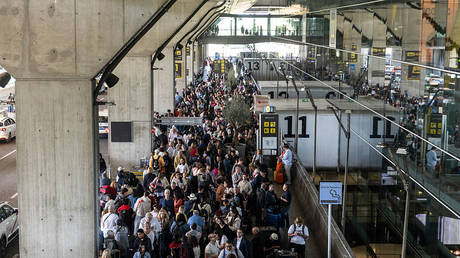 Spain declares state of emergency after nationwide blackout
Spain declares state of emergency after nationwide blackout
However, it is not only in the medium term that the energy transition is not doing what its supporters believe it should. Easter week exemplifies all the problems associated with the plan to switch Germany’s energy production to mainly wind and solar.
On a sunny Easter Sunday, for example, the five million or so solar installations in Germany produced far more electricity than would have been needed to cover demand during the holiday.
However, electricity must be consumed exactly when it is produced, otherwise the electricity grid may be disrupted. This applies both nationally and to the local electricity grids on site and the regional capacities of the weather-dependent energy sources.
Due to the gigantic oversupply – 15 gigawatts too much, the output of a dozen average nuclear power plants – the price of electricity has fallen into negative territory at times, as low as -5 cents per kilowatt-hour. Germany has paid the French, Belgians etc. millions of euros to buy Germany’s surplus electricity so that the German electricity grids do not collapse.
However, this blatant surplus of electricity has not only meant that a lot of electricity has had to be sold abroad for a fee and lines to France and Belgium have had to operate at full capacity, there have also been numerous power outages in south-west Germany in particular, which could be linked to the oversupply and local grid overload.
The real drama is that the numerous solar plants in Germany cannot be controlled, regulated or even taken off the grid when electricity production exceeds demand. If there is a lot of sunshine – possibly accompanied by a lot of wind – on an afternoon with low electricity demand, Germany has increasing problems getting rid of the surplus energy.
This not only increases the potential for regional power outages and so-called “brownouts,” it also greatly increases the cost of electricity production overall – as Easter has shown.
The Siemens disaster
Storing electricity is a fundamental problem that has not been solved. Big companies like Siemens experimented for more than a decade with steam engines transforming electricity produced by windmills into hydrogen, in order to stock and transport it. Those experiments did not result in a viable commercial business model. Meanwhile Siemens, once upon a time in the 1960s a leader in nuclear technology, has abandoned its entire energy branch.
In 2020, the energy division was separated from Siemens. However, Siemens Energy ambitiously wanted to grow in the wind energy business and merged with the Spanish company Gamesa. But just three years later, it was clear that this would not work. Were the reasons additional management mistakes, was it Chinese competition or were there other issues?
Read more Spain opens probe into major power grid failure
Spain opens probe into major power grid failure
Siemens Energy turned from a beacon of hope to a stock market nightmare. New bad news came from quarter to quarter. It was the wind power business, of all things, that slipped deeper and deeper into deficit. The Managing Board of Siemens Energy had to lower its forecasts countless times, and Siemens lost lots of money with its mergers in Spain. If the management had stamina, they would investigate thoroughly the power outage of last Monday and publish the conclusions. What happened in Spain and Portugal could happen at any moment in Germany and Austria.
Twenty-five years ago, I was involved in the municipal council of the village where I lived in Austria until 2020, when I was forced to quit. We had worked on emergency scenarios for a blackout. One item was to organize “islands of infrastructure” in military barracks and other buildings. The plan was that in case of emergency, people would be able to walk there and be provided with food, water, and first aid. In those days, there was still a generation of leaders who were hands-on and who knew how to get things done. Later I realized that this generation of men and women had passed away. In today’s EU, any such crisis would probably lead to a humanitarian disaster, to a total breakdown of public order.
I remember well the blackout that hit Northern Italy in 2003 and another one in the US; both were protracted and citizens were left in the dark and cold. In war-torn Iraq, people were wondering how those Western armies and NGOs would ever build up the electricity after the US invasion since they were unable to do it back home.
Having lived in Lebanon until the summer of 2023, I am fully aware of constant power cuts and know the nuisance of running one’s own generator, the bad smell, and the noise of all the generators around. But diesel can provide a regular flow of electricity, which no solar panel can do. But thanks to affordable Chinese solar panels, nearly every household in Lebanon has one.
Good old diesel generator
Interestingly, hospitals in Spain and Portugal continued to provide services thanks to their diesel generators. Emergency operations could be done and intensive care was secured. But what about the internet and mobile phone providers? The entire system of mobile communication broke down. Even speeches by the heads of governments could be watched abroad but not by concerned citizens.
Read more Is the EU finally coming to its senses on Russian energy?
Is the EU finally coming to its senses on Russian energy?
I sometimes joked with my Lebanese friends that they should do crash courses for EU institutions on how to live without a regular supply of electricity. Using common sense, keeping good relations with one’s neighbors and knowing how to handle a diesel generator are certainly helpful. And where does the diesel come from? Yes, Russian oil companies used to provide huge volumes of diesel to their EU customers. The Rosneft refinery of Schwedt close to Berlin was confiscated by the German authorities in 2022.
The back-up for all those renewable efforts used to be natural gas, mostly from Russia, termed the “energy of transition.” There was a consensus that cooperating on oil and gas within the European continent was of benefit to both sellers and buyers. These days are gone.
What happened on Monday on the Iberian Peninsula was another wake-up call. But so far EU officials seem stuck in their green agenda. They could have understood previous signals, but they refused to do so. In the EU, energy has become an ideological topic and is no longer a technical matter. What Spain and Portugal went through earlier this week lasted for about 10 hours, and I expect more such incidents. One can handle it in a country like Lebanon, but the question remains: can one run an industry with constant power cuts? Deindustrialisation inside the EU will only accelerate. If one day, certain countries would like to buy Russian gas again, the volumes will be much smaller due to more limited industrial production.
-
Site: Zero HedgeThe Gold Rush You Weren't Supposed To Notice & The Next Big Monetary ResetTyler Durden Wed, 04/30/2025 - 11:05
Authored by Nick Giambruno via InternationalMan.com,
Last year, central banks purchased approximately 34 million ounces of gold, marking the third consecutive year of near-record buying.
We’re witnessing the acceleration of a long-term trend that began around the 2008 financial crisis, when central banks shifted from net sellers to net buyers of gold. That trend has exploded in recent years, with gold purchases surging to record-breaking levels, as shown in the chart below.
All signs indicate that 2025 will be another massive year for central bank gold buying.
Central banks and governments are the largest single holders of gold in the world. Together, they officially own over 1.2 billion troy ounces—out of the 6.9 billion ounces humans have mined throughout history.
However, these are just the official numbers that governments report. The actual gold holdings could be much higher, as governments tend to be secretive about their reserves, treating gold as a strategic financial asset.
Russia and China—the US’s top geopolitical rivals—have been the biggest gold buyers over the last two decades.
It’s no secret that China has been stashing away as much gold as possible for many years.
China is the world’s largest producer and buyer of gold. Russia is number two. Most of that gold enters the Chinese and Russian government’s vaults.
The trend of central bank gold accumulation is gaining momentum. If the rest of the world is moving back toward gold, the US will not want to be left behind.
Yet, officially, the US has not added a single ounce to its 261 million ounces of gold reserves in decades.
Unofficially? That may be a different story.
Since Trump’s victory in the 2024 presidential election last November, a sudden flood of physical gold has flowed into the US from major gold hubs like London, Switzerland, and elsewhere.
The gold market is typically dominated by paper trading, with large-scale physical deliveries being rare. However, CNBC and the World Gold Council report that more than 19 million ounces—possibly much more—of physical gold has entered the US since November.
That’s roughly 13% of the total alleged gold holdings in Fort Knox flowing into the US in less than six months.
This is not normal market action.
This strongly suggests that a non-market entity—most likely the US government—is behind this massive gold movement.
That’s why Trump’s recent comments about Fort Knox are so interesting.
Trump recently brought Fort Knox into the national conversation, something no US president has done in decades.
Would he have even mentioned the possibility of auditing Fort Knox if the vaults were empty? I doubt it.
Instead, there’s a good chance that the enormous inflow of physical gold into the US is happening in anticipation of an audit.
Connecting the Dots—Something Big Is Coming
So, here’s what we know:
-
Trump has put Fort Knox’s gold holdings back in the national spotlight for the first time in decades.
-
Central bank gold purchases are accelerating at record-breaking levels.
-
An unusually large influx of physical gold is flowing into the US, far beyond regular market activity.
Follow the Gold. It Always Leads to the Truth
Central banks are hoarding gold at record levels. The US government is likely pulling in millions of ounces. And Trump is talking about Fort Knox.
This isn’t coincidence.
Find out what they’re preparing for and how you can be ready in our urgent dispatch:
The Most Dangerous Economic Crisis in 100 Years… the Top 3 Strategies You Need Right Now
-
-
Site: RT - News
The Ukrainian leader reportedly said only the US president can broker peace between Moscow and Kiev
Ukrainian leader Vladimir Zelensky tried to persuade US President Donald Trump during their brief conversation at the Vatican not to give up on his efforts to settle the conflict between Moscow and Kiev, according to The Economist.
Trump and Zelensky got together for some 15 minutes on the sidelines of Pope Francis’ funeral on Saturday.
The negotiations “produced a striking photograph of the two men sitting in St. Peter’s Basilica, locked in conversation as apparent political equals,” The Economist wrote on Tuesday.
Ukrainian sources told the outlet that Zelensky used the discussions “to deliver a simple message: Ukraine is ready for an unconditional ceasefire, Russia is not, and Mr. Trump should not abandon a peace that only he can deliver.”
Russia previously called the 30-day ceasefire demanded by Kiev “unrealistic,” stressing that talks can take place without a pause in the fighting.
Read more Zelensky openly threatening Victory Day terrorist attack – Moscow
Zelensky openly threatening Victory Day terrorist attack – Moscow
US Secretary of State Marco Rubio warned over the weekend that Washington could disengage from the peace process if it does not see rapid progress from Russia and Ukraine towards an end to the fighting.
The mood in Ukraine is now “cautiously optimistic” because the officials in Kiev believe that “after months of threats and blackmail,” Trump has finally started “to respect” Zelensky, the Economist wrote.
The talks at the Vatican became the first in-person conversation between the two leaders since their meeting at the Oval Office in late February, which devolved into a shouting match in front of the cameras.
At the time, Trump and US Vice President J.D. Vance accused Zelensky of being ungrateful for the American aid and not being interested in peace. The public quarrel resulted in the Ukrainian leader’s visit to the White House being cut short.
Following the meeting at the Vatican, Trump described Zelensky as “calmer,” saying that the Ukrainian leader now “understands the picture. And I think he wants to make a deal. I do not know if he wanted to make a deal [before]. I think he wants to make a deal.”
READ MORE: Trump claims he stopped Russia from taking over Ukraine
On Tuesday, Russian Foreign Minister Sergey Lavrov reiterated Moscow’s readiness to engage in direct talks with Kiev without any preconditions.
As for the ceasefire, Russia considers it “a precondition that will be used to further support the Kiev regime and strengthen its military capabilities,” he explained.

